#institute of christ the king pilgrimage
Text
A reputation in tatters

Henry III’s divergence from the traditional model of French kingship made him a controversial figure in his own lifetime. He was an enigma to many of his subjects. Henry looked majestic: he was taller than average, comported himself with elegance and dignity; he was a good public speaker and, following the model set by Philip II, diligent and hard-working. He took the idea to heart that in order to reform the state Frenchmen would have to reform themselves. Who better to set an example than the king: for three years, beginning in January 1576, he instituted the practice of retiring after dinner to hear public lectures from the leading thinkers of the day on edifying subjects. But he did not always behave in the manner which was expected: he was notoriously free with his emotions in public and his sense of irony — he ennobled his court jester in 1584— was lost on many of his subjects. Without a child and dogged by ill-health his rule was precarious. He and the queen tried all sorts of quack fertility treatments. From the moment in March 1580 when Guise recommended a doctor from Dauphiné, the king would spend an increasing amount of time away from court taking thermal cures. The duke accompanied the king on the pilgrimages that he undertook to various shrines to assist the queen’s conception. In 1582 Henry, already noted for his piety and convinced that divine wrath was the cause of his afflictions, underwent some form of spiritual conversion that manifested itself in abstinence. Regular dietary austerities had already become a significant part of his life and he now vowed to sleep with no other woman than the queen. On 11 August the king took leave of the court, leaving his mother in charge to go on a three month retreat. His immersion in the burgeoning penitential movement was crowned by the establishment of the new Confraternity of the Annunciation of Our Lady, which held its first procession at the feast of the Annunciation 1583.
On Maundy Thursday, in pouring rain, the king, dressed in the grey serge cagoule of a simple brother, returned in procession from Notre Dame cathedral, imitating Christ’s Passion with ritual flagellation. Many were shocked at the indignity of the spectacle; others, were more inclined to satirize what they saw as hypocrisy. The following ditty was one among dozens of lampoons:
Having pillaged the kingdom France
And all his people ripped off,
Is it real penitence
To cover yourself with a dripping sack cloth?
The Cardinal of Guise, who carried the cross, and Mayenne, who was master of ceremonies, had more dignified roles. Their elder brother was not present: he mocked the king for ‘living like a monk and not a king’. And there was something in this: the king spurned the traditional aristocratic pastimes, like hunting, tennis, and riding. As a consequence jousts and tourneys at his court were rare. The king was aware of Guise’s scorn, turning it into a joke one day, as he leapt into his saddle, remarking afterwards to one of the duke’s men nearby ‘Does my cousin have monks like me in Champagne who mount their horses in one leap?’
Henry was widely admired but he was not popular. Recent historians have found much to applaud too, but their judgement relies too much on the assessment of the educated elite. The people were less impressed. They blamed Henry for permitting heresy and thus bringing down on them God’s wrath in the form of harvest failure and plague, which afflicted his reign and came on top of the economic dislocation caused by civil war. As early as 1578, Claude Haton overheard the townsfolk on Provins denouncing him as a tyrant and an atheist. And his reputation suffered further because one could not trust him; he said one thing and did another. He issued a grand edict in 1580 abolishing many recently created venal offices, which were hated as a form of stealth tax since the purchasers recouped their investments in gifts and bribes, only to invent all sorts of new ones to sell soon after. Even taverns were turned into venal offices, forcing their owners, who had to purchase them from the Crown, to pass the cost on to the poor customer! Haton thought Henry deceitful, about as trustworthy as a ‘Turk’ or a ‘cunning whore’. The perceived gap between the king’s publicly declared virtue and privately practised vice was fertile ground for satire. Moralists railed against Henry’s court as a den of immorality, profligacy, and corruption. They pointed the finger at the king’s favourites, his mignons, or ‘sweeties’, a word with homosexual undertones. There was no truth in the rumours: but the king did little to stop tongues wagging; his ostentatious shows of affection towards them scandalized the public. The king’s penchant for dancing, which he undoubtedly associated with dexterity and self-discipline, was a red rag to the priggish. The mignons were swaggering dandies, whose fashions marked them out from ordinary gentlemen and outraged the Parisian bourgeoisie, none more so than the misanthropic diarist Pierre de l’Estoile, who described:
their hair like whores in a brothel, curled and recurled by artifice, sticking up under their bonnets, and their ruffs of their fine linen shirts stiffened and elongated so that their heads above them looked like the head of Saint John the Baptist on a platter. The rest of their clothes were the same; their pastimes were gaming, blaspheming, jumping about, dancing and vaulting, quarrelling and whoring, to follow the King around everywhere and do everything to please him.
Anti-court feeling was strong among the middling sort and fuelled the righteous anger of the pious killjoys who made up the ranks of the Catholic League. Haton described how in 1581 the religious radicals in his parish refused to take part in public prayers for an heir, desiring Henry’s ‘death and the extermination of his entire lineage’. This was an extraordinary moment which shows that ordinary people, who surely had no acquaintance with the new Protestant literature justifying Tyrannicide, were imagining the king’s death in the early 1580s.
Stuart Carroll - Martyrs and Murderers: the Guise Family and the Making of Europe
Thanks @microcosme11 for the gif!
9 notes
·
View notes
Text
What is Holy Week?

This Sunday marks the beginning of Holy Week—a week designed to focus our attention on the “passion,” or suffering, of Christ.
The tradition of Holy Week began when Christians making pilgrimages to Jerusalem had a natural desire to reenact the last scenes of the life of Christ in dramas.
There is an ancient text called The Pilgrimage of Egeria, that describes a fourth century visit to Jerusalem. It was noted that people were already observing Holy Week by that point in history, so it dates back many, many centuries.
There are five days in this week that are set apart:
1. Palm Sunday
Palm Sunday commemorates Jesus’ entry into Jerusalem as the long-awaited Messianic King. But the scenes of coronation set the stage for His crucifixion later in the week, since the King of the Jews isn’t placed on a throne but hung on a cross.
2. Maundy Thursday
Maundy Thursday commemorates Jesus’ last meal with His disciples, where He institutes the Lord’s Supper. The term “Maundy” comes from the Latin mandatum (from which we get our English word “mandate”). The term is usually translated “commandment” in the account of this Thursday night in John’s Gospel, where Jesus gives His disciples a new commandment after they finish their meal together (John 13:34-35). It also commemorates Jesus’ agonizing prayer in the Garden of Gethsemane.
3. Good Friday
Good Friday commemorates Jesus’ arrest, trial, suffering, crucifixion, death, and burial. It is a grave reminder to us of the cost Jesus had to pay to save us from our sins, and it is a day for us to “survey the wondrous cross on which the Prince of Glory died.”
4. Holy Saturday
Holy Saturday commemorates the day Jesus rested in the tomb, and it commemorates the grief, the sorrow, the pain, and the confusion of Jesus’ followers as they come to grips with the reality of His death. It feels like darkness has descended, because the light of the world has been slain.
5. Easter Sunday
Easter Sunday is the day Christians celebrate the resurrection of Jesus Christ from the dead, celebrating the joy and hope and victory we have through the risen Christ.
Each day is rich with meaning, significance and spiritual admonishment!
0 notes
Text
Wonderfulfiction The Cursed Prince online - Chapter 551 - Emmelyn Has So Many Questions perpetual interest share-p3
Wonderfulfiction fiction - Chapter 551 - Emmelyn Has So Many Questions spotless inform propose-p3
Novel-The Cursed Prince-The Cursed Prince
Chapter 551 - Emmelyn Has So Many Questions number silver
He permit the shield travel along with his dragon in front of them and didn't make an effort to meet up with him. He was positive Aslain can track the guard's path and followed him slowly but surely.
In the reference to their latter queen's identity, the defend suddenly appeared surprised.
The Cursed Prince
Emmelyn stared at Maxim's back with knitted brows, seeking to approach what she possessed just observed between Maxim and also the guard. She thought her ears ended up taking part in techniques on the.
OMG... I can't await Emmelyn to master the simple facts about all the things.
He tilted his travel to see Maxim more effective. The princess possessed passed away for 18 years. So, it was subsequently amazing to find out an outsider uttered her title, and this man even referred to as her 'aunt'?
**********
So, Queen Maude really knew the female Emmelyn spotted in their wish? Was she Catalina Leoralei?
"Master Alexander is sickly?" Maxim inspired to ensure. He wondered why the timing was terrible. "Can we see him?"
Possibly... Emmelyn would fully understand his situation. Possibly Emmelyn could forgive him for unintentionally pulling her into this chaos.
The Cursed Prince
Was that genuine? Performed Maxim and his awesome friends and family fully realize the Leoraleis?
Maxim's terms preserved buzzing in their imagination as she missing-mindedly bought on Aslain's again and sat there, whilst Maxim sat in front of her, to secure her like prior to.
Novel
As she observed his back again, Emmelyn was thinking if Maxim knew one thing and then he preserved stuff from her.
Was that true? Have Maxim along with his household really know the Leoraleis?
Emmelyn despised him.
The master patted Aslains back and instructed him to decelerate. Considering that Emmelyn was obstinate and denied to maintain onto him, Maxim was nervous she would actually fall season when they maintained exactly the same performance.
Might be... Emmelyn would realize his situation. Perhaps Emmelyn could forgive him for unintentionally pulling her into this mess.
what is rogue's power called
He actually didn't have in mind the simple truth, only suppositions. And that he didn't learn about it until many days ago when he spoke with his mother in individual.
The Cursed Prince
Was that why Queen Maude suddenly appeared unwell in their lunch with each other after Emmelyn explained to her about her fantasy?
My Castle, My Castellan
What was he hiding??
Was that a fact? Do Maxim and the family truly know the Leoraleis?
Novel
"Even now... Myreen is just not offered to outsiders," the shield mentioned again. "I can't assist you to enter."
Was that true? Have Maxim and the spouse and children truly understand the Leoraleis?
Maxim didn't know.
He transformed around and have along with his dragon. The other one two dragons stayed behind to protect the spot, in case that there had been other intruders arriving.
Was that why Queen Maude suddenly searched unwell in their lunchtime alongside one another after Emmelyn advised her about her aspiration?
You think she will forgive Maxim for camouflaging the truth? Will she despise him as being the reason for all her sufferings? Or will she realize his discomfort and fault simply the Leoraleis? How could their partnership flip? Could it flip undesirable or will they be associates?
"Try," Maxim responded.
Was she dreaming or hallucinating because she was losing their mind after remaining stuck in the wilderness for two days?
0 notes
Photo
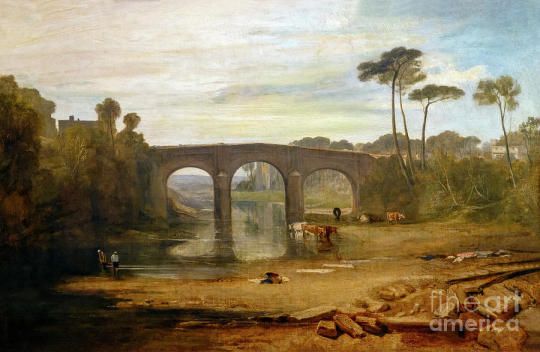
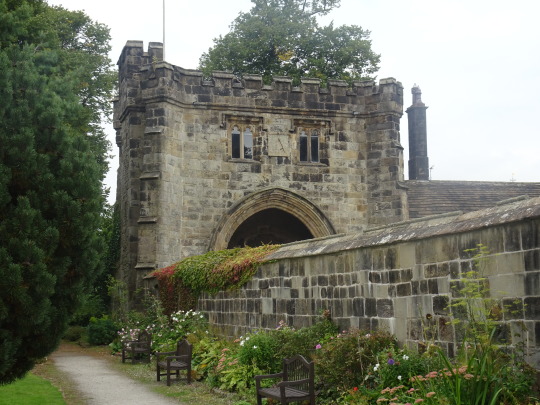
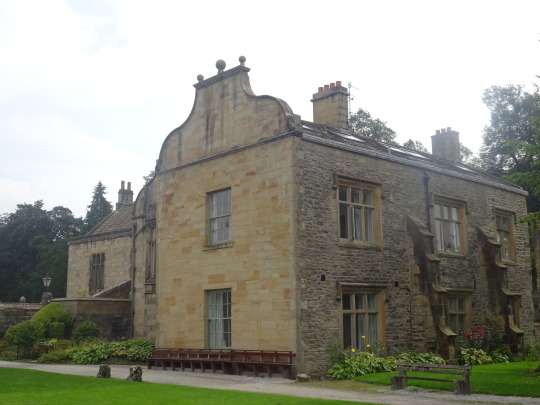
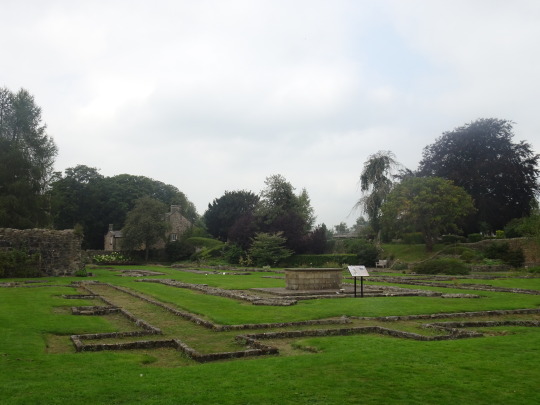
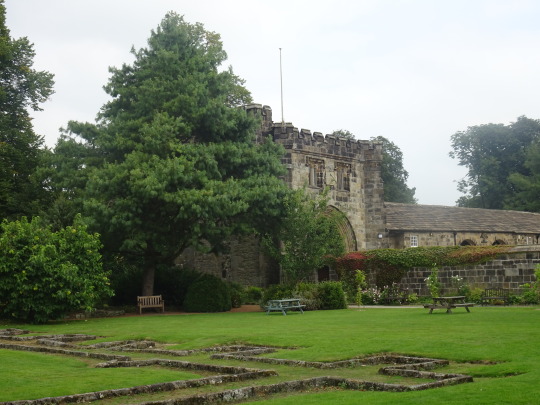
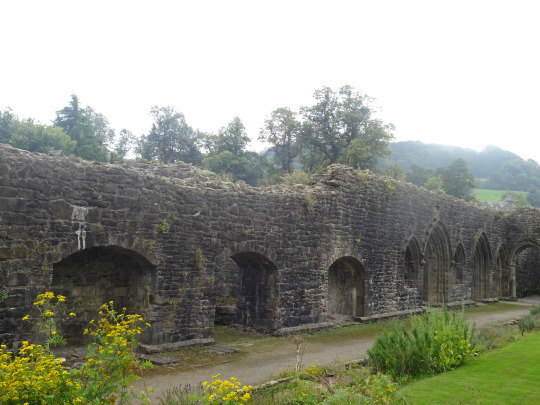

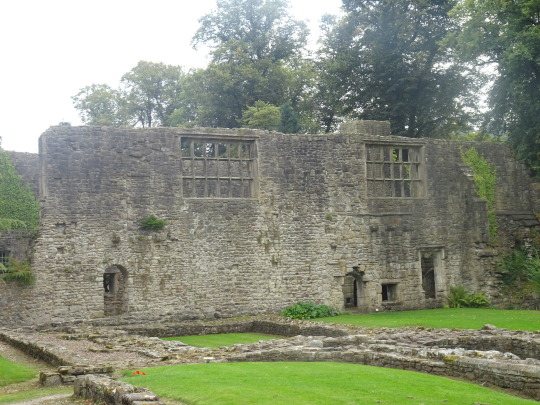

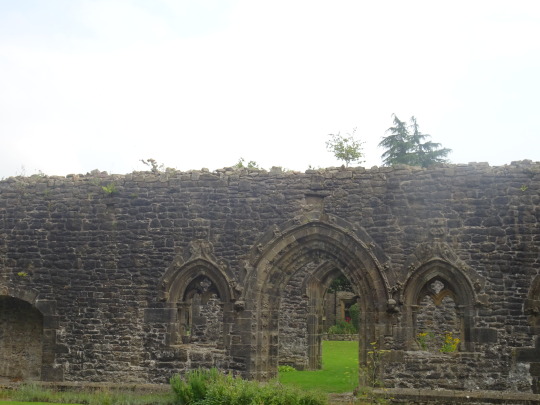
“When all England is aloft
Where so safe as in Christ’s croft?
Where do you suppose Christ’s croft to be,
But between Ribble and Mersey?” Anon, quoted by J.A. Hilton.
Whalley Abbey was built between 1283 and 1296 by Cistercian monks from the failed Stanlow Abbey, sponsored by Norman baron Henry de Lacy. They had a solid if uneventful life, serving God and man well in a pious, rural and conservative county.
This was all to change in 1536, when Henry VIII took an axe to this and other institutions as part of a landgrab and to fuel his wars, dressed up in the language of the new Protestant religion.
Throughout Lancashire and other rural areas a movement called the Pilgrimage of Grace arose to defend the old religion; while it’s questionable how big a threat this was to Henry and how important Whalley was to the rebellion, the monks and Abbot John Paslew were blamed by the Heinricians, who defeated the rebels, executed Paslew and shut down Whalley in 1537. It was sold by the crown to Richard Assheton.
Lancashire, as Hilton has painstakingly chronicled, was one of the areas where Catholicism was strongest in the centuries after the Reformation, not (as is popularly believed) as a dying faith clinging on but in its dotage, but a strengthened popular faith fed by the Counter-Reformation in Europe and its links to Ireland (I will be sharing much more about this later).
Despite the relative strength of the old faith, even here it was only followed by a minority; the diehard recusants who defied church and state for their faith, and the ‘church papists’ who were outwardly Anglicans but believed in the old faith in their hearts; while obviously no friends to the new Puritan movement, these were also not going to fight for Catholicism in any meaningful way.
So it was that William Blundell, from nearby Crosby, one of many Catholic gentry still living in Lancashire, rued:
“The time hath been we had one faith
And strode aright one ancient path,
The time is now that each man may
See new religions coined each day”.
What fragile peace there may have been in Lancashire between 1536 and 1642 was shattered when the British Civil Wars broke out in 1642; for obvious reasons, Catholics were overwhelmingly loyal to King Charles I, fearing and hating the Puritans whom they found on the other side; even though they were mistrusted by royalist leaders who saw them as a liability.
Like the beleaguered Christians in Syria today the Catholic cavaliers (including William Blundell, son of William Blundell) stuck with a leader for whom they had no love rather than a rebel movement which openly hated them.
The cause which Catholics overhwelmingly supported ended up losing, of course, and Charles was deposed and executed in 1649, replaced by a ‘protectorate’ led by Oliver Cromwell (1649-58) and after his death his son Richard (1658-60), before Charles II, son of Charles I, ousted Richard (who ended up living until 1712, though as a powerless individual) and became king in 1660.
None of this furthered Whalley’s cause. It was used as a private home by Ralph Assheton, the member of Parliament for Clitheroe (a fine town which I’ll blog about later) who knocked down the monastery largely out of spite (he was a staunch Protestant who had opposed Charles I in the civil wars, though he was not punished by Charles II, to whom he was no serious threat).
Ralph Assheton, a descendent of that Richard who had bought the site in 1537, built the house, which still stands, but deliberately did little with the monastery; it can be seen (1) as it was in 1811 when JMW Turner came here and painted it. Throughout this time, little of note happened at Whalley, which was largely as it was at Ralph Assheton’s death in 1680, but decayed.
In 1923, it was bought by the Church of England, who sponsored an excavation which has made Whalley what it now is, a picturesque ruin (in the Forest of Bowland AONB, which as you’ll see I thoroughly explored). with a still standing and still useful 17th-century house, which was done up in 2005 and is now used by the church as a conference centre.
So although we’re living in a world that John Paslew would have found baffling and reprehensible, I hope some of the monks would have appreciated that God and man are still being served here.
34 notes
·
View notes
Text
Bethlehem
https://www.grunge.com/620656/the-untold-truth-of-bethlehem/
Aside from Christ's birth, the town is associated with other biblical figures revered by Jews, Christians, and Muslims alike.
The original name, which persists today in English, essentially originates from the Hebrew words for "bread" and "house,” so Bethlehem" means "house of bread."
· Interestingly, "Bethlehem" can also mean "house of war" in Hebrew, since both bread and war come from the same root.
· In Arabic, Bethlehem means "house of meat." According to Christianity Today, the name might refer to the importance of animal husbandry and meat production.
Pre-biblical references to Bethlehem are rare. In fact, there may only be one reference to the town in the written record from Egypt.
· The Amarna Letters are a cache of texts found in Egypt that detail the correspondence of Egypt's pharaoh with numerous foreign rulers; Bethlehem is possibly mentioned in these letters, but scientists and historians disagree
However in 2012 that excavations in Jerusalem had unearthed a piece of an administrative seal inscribed with the words "Bethlehem," "seventh," and "king."
· The seal's inscription proved that the artifact was an administrative item used to stamp tax shipments sent to the royal seat in Jerusalem.
o Thus, in the eighth or seventh century B.C., the town was paying tribute to the kings of Judah and was important enough that its officials had their own seals
Bethlehem is mentioned in the Bible well before Jesus. The first mention is in Genesis in the context of the burial of one of Jesus' distant relatives, the matriarch Rachel.
· Her tomb, originally on a lonely roadside in the middle of nowhere, is shrouded in a beautiful tradition and has attracted controversy as of late due to its disputed status.
o According to Jewish tradition, Jacob had a vision of his suffering descendants crying out to her. So when she died, he buried her along the road so her suffering children would pass by and beg for her intercession with God. For this reason, Israel has controversially insisted on retaining control of the tomb.
o The tomb has seen its share of violence because of its centrality to Jewish tradition. According to Chabad, Jordanian forces banned Jewish prayer at the site in 1948. Today, according to the city website, Bethlehem is part of the Palestinian Territories.
The town was also the home of an ancestor of Jesus named David.
· David was selected over his elder brothers to become king of Israel, despite his humble station in life. According to Christian Foundations, he was anointed in Bethlehem
According to tradition, Jesus was born in a stable, but the Church of the Nativity is built over a cave that served as a shelter to shepherds and their flocks
· Used by shepherds to this day
· Justin Martyr, an early Father of the Church, corroborated the tradition of the cave birth.
o As a native of nearby Nablus, he would have known the area and its traditions well, so his testimony should be taken seriously.
Three controlling churches have divided the Church of Nativity among themselves.
· The Greek Orthodox Church holds approximately 80% of the property and is the majority shareholder. The Roman Catholic and Armenian Apostolic Churches own the rest, including the grotto.
o To ensure peace between the three churches and put an end to the squabbles, the Ottoman Empire in 1852 instituted the Status Quo. This balance, which is still in force today, means that the different denominations adhere to a strict schedule, ensure that each other’s services begin on time, and avoid touching each other's stuff
The fight over the church even helped ignite the Crimean War in 1853, a mere year after the Status Quo was enacted.
· France and Russia favored the Catholic and Orthodox churches' claims for primacy and guardianship of the church, forcing the Ottoman Empire to pick sides.
The Church of the Nativity has been burned and looted multiple times. A Jewish-Samaritan revolt against the Byzantines in 529 A.D. damaged the original church so badly that it had to be rebuilt.
Forces of the Persian Empire invaded the Byzantine Empire's territories in 614 A.D, sacking and looting churches for their valuables.
Eventually, they arrived in Bethlehem and prepared to loot the Church of the Nativity, but the commander noticed a mosaic depicting the Magi (Persian Zoroastrian priests), and he spared the church, not wishing to damage the mosaic.
· The mosaic hasn’t survived into modern times
There are fears that the Christian community Bethlehem is in danger of disappearing forever.
· Over 85% of the town's inhabitants were Christians of various denominations in 1950; by 2016, that number had declined precipitously to 12% and probably is less now due to mostly economic factors combined with a tense political situation.
· Economic and educational opportunities are fleeting in the Palestinian Territories but are plentiful in neighbouring Israel and in Western countries.
o Pope Francis has determined that there will be no Middle East without Christians, so steps must be taken to create a safe environment for the world's oldest Christian communities and discourage emigration. Bethlehem's first female mayor, Catholic Vera Baboun, made this a central part of her platform
Despite the collapse of Bethlehem's Christian population, the town is still a place of pilgrimage whose remaining Christians take their faith very seriously.
Christmas is celebrated three times in Bethlehem; on December 24-25 by the Catholic Church, on January 6—7 by the Orthodox and Greek Catholic Churches, which use the Revised Julian Solar Calendar, and on January 19 by the Armenian Apostolic Church, which uses the old Julian Solar Calendar à a month of festivities, processions, and masses/liturgies
Modern Bethlehem is famous for its bridal dresses
famous technique involves couching gold or silver thread onto their base materials to produce beautiful floral and linear patterns
3 notes
·
View notes
Text
Drifting Yogi
DRIFTING YOGI– A rare modern day story of a spiritual adventure
PART -- 1 LEAVING HOME
"On December 13th 2004, I gave up my class 12th board exams and fled to India to become a monk.
I was brought up by a single mother along with three sisters. Growing up through dire poverty, my early childhood years were unforgettably sad and painful.
Having been a dreamy boy, i took comfort from reading poetry and spiritual books at school. I was a lazy, dull-witted student and did not perform well in exams.
Since i couldn't figure out an ambition
for my future, i remember studying the academic subjects only to get through the exams; so that i don't disappoint my guardians who were spending for my schooling.
To distract my attention from the troublesome situations of a boarding school life those years, where resources were scanty... and the constant bullying by elders, i drove my emotions deeper into spirituality and consoled myself through writing poems.
Sometimes gazing at the serene images of Lord Buddha.... i started dreaming of studying and practicing meditation to achieve that amazingly peaceful and hypnotic composure of a sitting Buddha.
And i didn't care about achieving anything otherwise.
So in December 2004 in Zhemgang higher sec. School, aged nineteen i gave up my bio-science exams and embarked on an extremely uncertain, risky and adventurous journey to India without a penny in my pocket.
Making the long story short.......
I arrived in india somehow and with much jubilation got admitted in a renowned Tibetan buddhist monastery in north India.
But soon i was disappointed to learn that the monasteries are just another institutions to study ethics, philosophy and rituals in their respective traditions. And no monastery offered direct meditation instructions to the monks/students to realise for themselves.
After just about one year in the Shedra, i quit the monastic life and started wandering in search of a master or a 'Tsa wai Lama'.
Which happened to be yet another crazy decision.
PART -- 2 MEETING WITH MASTER
AND PRACTICE
After a couple months of leaving the monastery i happened to travel in Lahoul valley near Ladakh.
There i met a wandering Tibetan Yogi building an old-style rock Stupa on the mountain.
Our meeting sparked in me a curious sense of emotions that was mixed with joy and tears when ever he talked to me.
Tired of wandering and pilgrimage, the desperate me requested him to take me to where ever he was based, so that i can serve him and learn more from him and about him.
Living with him, my life became more difficult and uneasy.
Since his nature was extremely harsh and extremely loving sometimes. But at the end of each passing day i found out that my emotions were being tested to the limit and he was teaching me a lot in disguise.
So considering his arrogance to me as a rare blessing i made a firm resolution to never leave him in no matter what situation.
After much waiting, i received instructions and his protection to pursue solitary retreats. Constantly wandering from one mountain cave to another, from deep forests to deserts,
From sea shores to solitary islands, sleeping on the roadsides, under the trees and cemeteries, i wandered like a fallen leaf carried by the wind.
Once i walked about 700 miles and bicycled 2000 miles under the heavy rains and scorching sun of tropical India. They were all a part of my yogic practice of drifting without a particular aim.
For more than twelve years, being so lost and carried away in retreats and wandering... i have almost forgotten my home country Bhutan.
PART -- 3 A VISION
During my retreats in the forests of central India, my provisions were taken cared by the innocent villagers, who were newly converted buddhists due to caste issues in indian social system.
Villagers were more than happy to have me, a buddhist practitioner from a foreign land in their remote villages.
So moved by their innocent reverence i started teaching them meditation, the essence of all the teachings of the buddha.... Although i struggled to interpret my thoughts to them through my extremely poor spoken Hindi.
Later in early 2017 i travelled to south east asian countries invited by some friends.
There i was surprised to discover a vibrant culture of education and youth who were equally enthusiastic to practice meditation to enhance their quality of lives through spiritual values and understanding.
We can all agree to one inevitable challenge, that our pursuit of modern lifestyle and it's glamour, is costing a serious toll on mental health to everyone.
And simultaneously dragging our beautiful home planet into a disaster of pollution and over-exploitation.
It was highly nourishing for me to meet amazing young people in those countries, who were raising concerns about the future of humanity and giving their commitments to spiritual lives through the practice of meditation in their daily lives.
In late 2018 i came back to Bhutan to visit my mother.
And started travelling and teaching meditation in Bhutan without the pre-requirements of arduous ngondro practices.
To my surprise many students young or elderly, literate or illiterate, started giving me amazing feedbacks through their own experiences just after a few months of practice. And were thoroughly inspired to follow the path of meditation in order to understand the dharma deeper for further enlightenment.
Some students have stopped drinking and smoking as a natural effect of meditation. And a few more have recovered from depression and migraine.
But at the same time, some people seemed still confused and quite suspicious regarding my initiatives.
While i welcomed their doubts and criticism, i was also scanning the psychological landscape of people influenced by their own belief systems.
So my dear elders, youngers, friends and relatives in Bhutan.
Let me take some space to share my humble opinions of what meditation is all about.
In other countries buddhist meditation is taught in school systems to enhance the performance of students.
i have seen buddhist meditations practiced in christian churches to generate faith and devotion in christ.
Buddhist meditations are practiced by psychologist and psychiatrists and implemented on their patients to recover from their mental disorientation.
Buddhist meditations are taught in high profile leadership and business management courses to enhance their productivity.
Buddhist meditation is practiced in the military of some countries for better focus and precision in their training.
Buddhist meditation is practiced by hard-core criminals in prisons to recover from their corrupted state of minds.
One friend in Philipines, a school teacher is teaching meditation in a catholic school, and the school administration approves her initiative.
In Burma, Sri lanka and thailand politicians practice meditation to render their political service more effectively.
So my dear friends in Bhutan,
those people in other countries may never have heard of arduous ngondro practices but they are still practicing meditation as the heart of all teachings of buddha and getting benefited immensely.
Now.... one can definitely argue my statements that those meditations are from different origins, like the Theravada from Burma or Srilanka,
Zen from Japan and ours is secret Dzogchen from the path of vajrayana.
To this possible argument, i can simply answer that even if the meditation practices originate from different, different countries and traditions....... ALL THOSE MEDITATION MANUALS EXIST IN THE VAST COMPILATION OF KANJUR AND TENJUR, TO WHICH WE ALL PROSTRATE UN-KNOWINGLY
WHEN WE VISIT THE TEMPLES AND MONASTERIES.
Ngondro, a set of mandatory preliminary practices that require five to 6 months to complete is an amazing tool to enter the Vajrayana buddhist path.
But at the same time...... Buddhas meditation teachings, being the answer to all human quests....sadly remain inaccessible to a large section of devout buddhists in our country. Simply because most aspiring meditation practitioners cannot fulfill the obligation to complete the long and arduous ngondro which is the standard practice required by tradition, as the gateway to the path of meditation.
But dear friends.... I speak with conviction through what little experience and observations i have gathered, that ngondro can be also practiced after meditation.
in fact NGONDRO BECOMES MUCH MORE AUTHENTIC AND JOYFUL IF PRACTICED WITH A PRIOR EXPERIENCE OF MEDITATION.
A few weeks ago a friend of mine sent me the Royal Kasho granted by our beloved His majesty the king, regarding the reformation of educational system.
As a humble citizen, I was deeply moved by the concerns made by His majesty the King, regarding the future of our youth and education in comparison to the extremely fast changing environment we live in.
My heart was throbbing.... and while i was holding my breath, i realised that even as a humble and a nameless citizen, living lonely as the road, i have fondly entertained many dreams.... if my independent research in the field of meditation therapies from the deep buddhist wisdom, can contribute an additional facility to our existing model of education.
So on this beautiful social networking platform i drifting yogi would like to share my deep prayers and aspirations
To teach meditation further in Bhutan,
Purely as a science of self discovery under secular setting.... and also as the essence of our Vajrayana path.
I have a dream to teach meditation to our budding youth to empower themselves to pursue their passion in life and achieve their goals to live a life of contentment.
And recovering from any kind of addictions from substance abuses through mental strength cultivated from meditation.
In 2019 when i was still in India, i heard some horrifying news from Bhutan about a series of rapes of minors in Paro, Dagana and somewhere.
My senses went numb.... and my mind was in dilemma out of sheer terror.
Because deep down.... i felt, if our youth can be educated in the practice of meditation, then such horrors can be totally prevented, by transforming the emotions of the practitioner into a naturally joyful and liberated state of being.
Finally, before i end this story,
I will drop a wish, that this story reach as many readers as possible.
And I deeply apologise if reading this story was a waste of time to some readers.
If any reader like this story, then i thank you for ur gesture of support.
And if any reader find flaws in my statements,
I welcome your valued criticism, so that i can learn a little from you.
MAY ALL BEINGS BE HAPPY!"
– By Drifting Yogi (Aka Sherab Dorji, 35)
Written on the bank of River Gamri, Lungten Zampa, Trashigang, Eastern Bhutan on 17 Feb.2021.
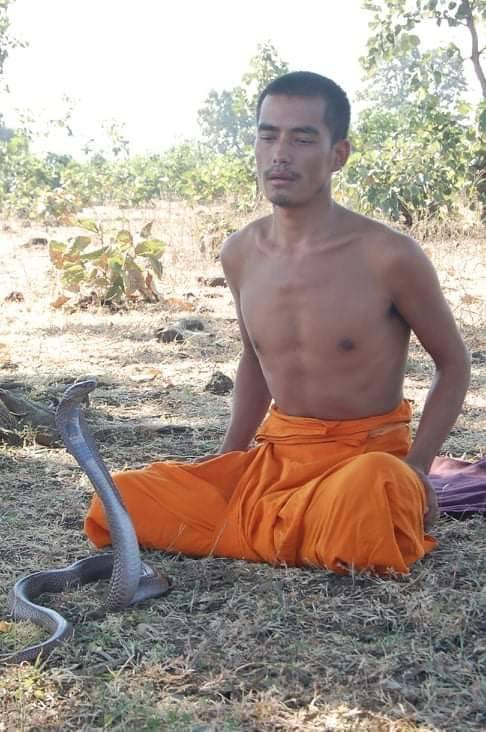
10 notes
·
View notes
Text
Rock-Hewn Churches, Lalibela [ Second Jerusalem, African Petra]
What we need to know About Lalibela?
The 11 medieval monolithic cave churches of this 13th-century 'New Jerusalem' are situated in a mountainous region in the heart of Ethiopia near a traditional village with circular-shaped dwellings. Lalibela is a high place of Ethiopian Christianity, still today a place of pilmigrage and devotion.
In a mountainous region in the heart of Ethiopia, some 645 km from Addis Ababa, eleven medieval monolithic churches were carved out of rock. Their building is attributed to King Lalibela who set out to construct in the 12th century a ‘New Jerusalem’, after Muslim conquests halted Christian pilgrimages to the holy Land. Lalibela flourished after the decline of the Aksum Empire.There are two main groups of churches – to the north of the river Jordan: Biete Medhani Alem (House of the Saviour of the World), Biete Mariam (House of Mary), Biete Maskal (House of the Cross), Biete Denagel (House of Virgins), Biete Golgotha Mikael (House of Golgotha Mikael); and to the south of the river, Biete Amanuel (House of Emmanuel), Biete Qeddus Mercoreus (House of St. Mercoreos), Biete Abba Libanos (House of Abbot Libanos), Biete Gabriel Raphael (House of Gabriel Raphael), and Biete Lehem (House of Holy Bread). The eleventh church, Biete Ghiorgis (House of St. George), is isolated from the others, but connected by a system of trenches.The churches were not constructed in a traditional way but rather were hewn from the living rock of monolithic blocks. These blocks were further chiselled out, forming doors, windows, columns, various floors, roofs etc. This gigantic work was further completed with an extensive system of drainage ditches, trenches and ceremonial passages, some with openings to hermit caves and catacombs.
Biete Medhani Alem, with its five aisles, is believed to be the largest monolithic church in the world, while Biete Ghiorgis has a remarkable cruciform plan. Most were probably used as churches from the outset, but Biete Mercoreos and Biete Gabriel Rafael may formerly have been royal residences. Several of the interiors are decorated with mural paintings.Near the churches, the village of Lalibela has two storey round houses, constructed of local red stone, and known as the Lasta Tukuls. These exceptional churches have been the focus of pilgrimage for Coptic Christians since the 12th century.
Criterion (i): All the eleven churches represent a unique artistic achievement, in their execution, size and the variety and boldness of their form.
Criterion (ii): The King of Lalibela set out to build a symbol of the holy land, when pilgrimages to it were rendered impossible by the historical situation. In the Church of Biet Golgotha, are replicas of the tomb of Christ, and of Adam, and the crib of the Nativity. The holy city of Lalibela became a substitute for the holy places of Jerusalem and Bethlehem, and as such has had considerable influence on Ethiopian Christianity.
Criterion (iii): The whole of Lalibela offers an exceptional testimony to the medieval and post-medieval civilization of Ethiopia, including, next to the eleven churches, the extensive remains of traditional, two storey circular village houses with interior staircases and thatched roofs.
Integrity
The drainage ditches were filled up with earth for several centuries, before being cleared in the 20th century, and have been disrupted by seismic activity. This has resulted in a severe degradation of the monuments from water damage, and most of them are now considered to be in a critical condition.
Structural problems have been identified in Biet Amanuel where an imminent risk of collapse is possible, and other locations need to be monitored. Serious degradation of the paintings inside the churches has occurred over the last thirty years. Sculptures and bas-reliefs (such as at the entrance of Biet Mariam) have also been severely damaged, and their original features are hardly recognisable. All of this threatens the integrity of the property.
Temporary light-weight shelters have now been installed over some churches and these, while offering protection, impact on visual integrity.
Other threats include encroachment on the environment of the churches by new public and private construction, housing associated with the traditional village adjacent to the property, and from the infrastructure of tourism.
Authenticity
The Rock-Hewn Churches of Lalibela are still preserved in their natural settings. The association of the rock-hewn churches and the traditional vernacular circular houses, in the surrounding area, still demonstrate evidences of the ancient village layout. The original function of the site as a pilgrimage place still persists and provides evidence of the continuity of social practices. The intangible heritages associated with church practices are still preserved.
Protection and management requirements
For centuries, the Church and State have been jointly responsible for the holy site of Lalibela. Home to a large community of priests and monks, it is a living site which draws many pilgrims to celebrate the great feasts of the Ethiopian Christian calendar. This active and energetic perspective is central to the management of the site.
No special legal framework is provided to protect the Rock-Hewn Churches except the general law, Proclamation No. 209/2000, which has also established the institution in charge, the Authority for Research and Conservation of Cultural Heritage (ARCCH). With the Ethiopian Church as a partner, the ARCCH has a representative in Lalibela but a principle difficulty has been the harmonization of the different projects and effective coordination between the partners.
The property is administered under the regional and the Lasta district culture and tourism office. To prevent the property from the impact of development, a draft proclamation has been prepared but this is not yet ratified. A management plan has not yet been established. A four year Conservation Plan was established in 2006 but this has yet to be fully implemented.
The boundary for the property has not yet been clearly delineated and a buffer zone has not yet been provided.
There is a need for stronger planning controls for the setting of the churches that address housing, land-use tourism and for a management plan to be developed that integrates the Conservation action plan, and addresses the overall sustainable development of the area, with the involvement of the local population.
https://www.wisdomethiopiatours.com
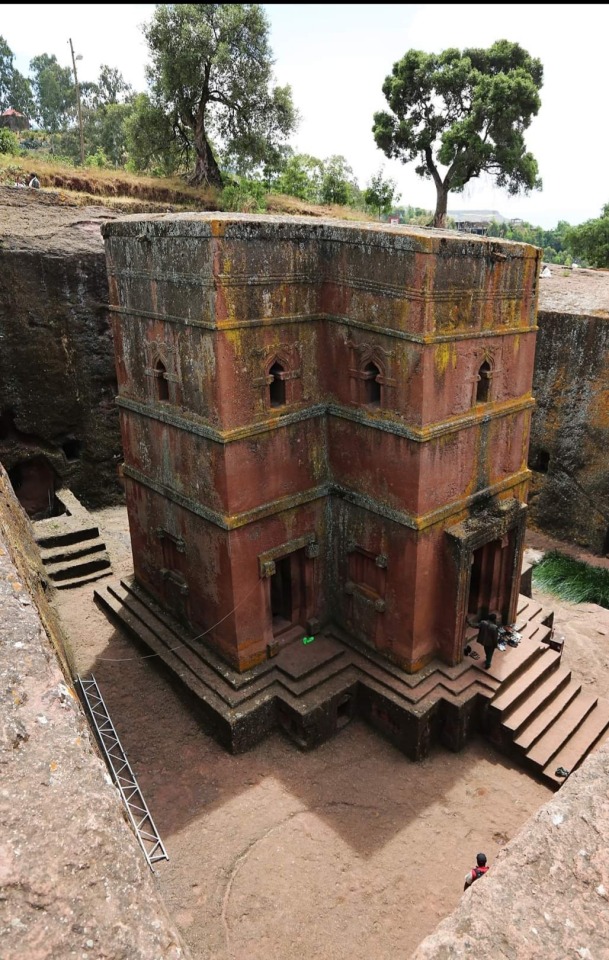
3 notes
·
View notes
Photo
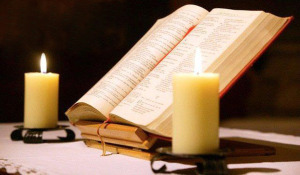
1st April >> Mass Readings (USA)
Maundy Thursday - Evening Mass
and
Chrism Mass.
Maundy Thursday - Evening Mass
(Liturgical Colour: White)
(Here are the readings for the evening Mass of the Lord's Supper):
First Reading
Exodus 12:1–8, 11–14
The law regarding the Passover meal.
The LORD said to Moses and Aaron in the land of Egypt, “This month shall stand at the head of your calendar; you shall reckon it the first month of the year. Tell the whole community of Israel: On the tenth of this month every one of your families must procure for itself a lamb, one apiece for each household. If a family is too small for a whole lamb, it shall join the nearest household in procuring one and shall share in the lamb in proportion to the number of persons who partake of it. The lamb must be a year-old male and without blemish. You may take it from either the sheep or the goats. You shall keep it until the fourteenth day of this month, and then, with the whole assembly of Israel present, it shall be slaughtered during the evening twilight. They shall take some of its blood and apply it to the two doorposts and the lintel of every house in which they partake of the lamb. That same night they shall eat its roasted flesh with unleavened bread and bitter herbs.
“This is how you are to eat it: with your loins girt, sandals on your feet and your staff in hand, you shall eat like those who are in flight. It is the Passover of the LORD. For on this same night I will go through Egypt, striking down every firstborn of the land, both man and beast, and executing judgment on all the gods of Egypt—I, the LORD! But the blood will mark the houses where you are. Seeing the blood, I will pass over you; thus, when I strike the land of Egypt, no destructive blow will come upon you.
“This day shall be a memorial feast for you, which all your generations shall celebrate with pilgrimage to the LORD, as a perpetual institution.”
The Word of the Lord
R/ Thanks be to God.
Responsorial Psalm
Psalm 116:12–13, 15–16bc, 17–18
R/ Our blessing-cup is a communion with the Blood of Christ.
How shall I make a return to the LORD
for all the good he has done for me?
The cup of salvation I will take up,
and I will call upon the name of the LORD.
R/ Our blessing-cup is a communion with the Blood of Christ.
Precious in the eyes of the LORD
is the death of his faithful ones.
I am your servant, the son of your handmaid;
you have loosed my bonds.
R/ Our blessing-cup is a communion with the Blood of Christ.
To you will I offer sacrifice of thanksgiving,
and I will call upon the name of the LORD.
My vows to the LORD I will pay
in the presence of all his people.
R/ Our blessing-cup is a communion with the Blood of Christ.
Second Reading
1 Corinthians 11:23–26
For as often as you eat this bread and drink the cup, you proclaim the death of the Lord.
Brothers and sisters: I received from the Lord what I also handed on to you, that the Lord Jesus, on the night he was handed over, took bread, and, after he had given thanks, broke it and said, “This is my body that is for you. Do this in remembrance of me.” In the same way also the cup, after supper, saying, “This cup is the new covenant in my blood. Do this, as often as you drink it, in remembrance of me.” For as often as you eat this bread and drink the cup, you proclaim the death of the Lord until he comes.
The Word of the Lord
R/ Thanks be to God.
Gospel Acclamation
John 13:34
I give you a new commandment:
love one another as I have loved you.
Gospel
John 13:1–15
Jesus loved them to the end.
Before the feast of Passover, Jesus knew that his hour had come to pass from this world to the Father. He loved his own in the world and he loved them to the end. The devil had already induced Judas, son of Simon the Iscariot, to hand him over. So, during supper, fully aware that the Father had put everything into his power and that he had come from God and was returning to God, he rose from supper and took off his outer garments. He took a towel and tied it around his waist. Then he poured water into a basin and began to wash the disciples’ feet and dry them with the towel around his waist. He came to Simon Peter, who said to him, “Master, are you going to wash my feet?” Jesus answered and said to him, “What I am doing, you do not understand now, but you will understand later.” Peter said to him, “You will never wash my feet.” Jesus answered him, “Unless I wash you, you will have no inheritance with me.” Simon Peter said to him, “Master, then not only my feet, but my hands and head as well.” Jesus said to him, “Whoever has bathed has no need except to have his feet washed, for he is clean all over; so you are clean, but not all.” For he knew who would betray him; for this reason, he said, “Not all of you are clean.”
So when he had washed their feet and put his garments back on and reclined at table again, he said to them, “Do you realize what I have done for you? You call me ‘teacher’ and ‘master,’ and rightly so, for indeed I am. If I, therefore, the master and teacher, have washed your feet, you ought to wash one another’s feet. I have given you a model to follow, so that as I have done for you, you should also do.”
The Gospel of the Lord
R/ Praise to you, Lord Jesus Christ.
-----------------------------------------------------------------
Maundy Thursday - Chrism Mass
(Liturgical Colour: White)
(Here are the readings for the morning Chrism Mass):
First Reading
Isaiah 61:1–3a, 6a, 8b–9
The Lord has anointed me and sent me to bring glad tidings to the lowly, and to give them oil of gladness.
The spirit of the Lord GOD is upon me,
because the LORD has anointed me;
he has sent me to bring glad tidings to the lowly,
to heal the brokenhearted,
to proclaim liberty to the captives
and release to the prisoners,
to announce a year of favor from the LORD
and a day of vindication by our God,
to comfort all who mourn;
to place on those who mourn in Zion
a diadem instead of ashes,
to give them oil of gladness in place of mourning,
a glorious mantle instead of a listless spirit.
You yourselves shall be named priests of the LORD,
ministers of our God you shall be called.
I will give them their recompense faithfully,
a lasting covenant I will make with them.
Their descendants shall be renowned among the nations,
and their offspring among the peoples;
all who see them shall acknowledge them
as a race the LORD has blessed.
The Word of the Lord
R/ Thanks be to God.
Responsorial Psalm
Psalm 89:21–22, 25 and 27
R/ For ever I will sing the goodness of the Lord.
“I have found David, my servant;
with my holy oil I have anointed him.
That my hand may always be with him;
and that my arm may make him strong.”
R/ For ever I will sing the goodness of the Lord.
“My faithfulness and my mercy shall be with him;
and through my name shall his horn be exalted.
He shall say of me, ‘You are my father,
my God, the Rock, my savior!’”
R/ For ever I will sing the goodness of the Lord.
Second Reading
Revelation 1:5–8
Christ has made us into a Kingdom, priests for his God and Father.
[Grace to you and peace] from Jesus Christ, who is the faithful witness, the firstborn of the dead and ruler of the kings of the earth. To him who loves us and has freed us from our sins by his Blood, who has made us into a Kingdom, priests for his God and Father, to him be glory and power forever and ever. Amen.
Behold, he is coming amid the clouds,
and every eye will see him,
even those who pierced him.
All the peoples of the earth will lament him.
Yes. Amen.
“I am the Alpha and the Omega,” says the Lord God, “the one who is and who was and who is to come, the Almighty.”
The Word of the Lord
R/ Thanks be to God.
Gospel Acclamation
Isaiah 61:1 (cited in Luke 4:18)
The Spirit of the LORD is upon me;
for he has sent me to bring glad tidings to the poor.
Gospel
Luke 4:16–21
The Spirit of the Lord is upon me, because of which he has anointed me.
Jesus came to Nazareth, where he had grown up, and went according to his custom into the synagogue on the sabbath day. He stood up to read and was handed a scroll of the prophet Isaiah. He unrolled the scroll and found the passage where it was written: The Spirit of the Lord is upon me, because he has anointed me to bring glad tidings to the poor. He has sent me to proclaim liberty to captives and recovery of sight to the blind, to let the oppressed go free, and to proclaim a year acceptable to the Lord. Rolling up the scroll, he handed it back to the attendant and sat down, and the eyes of all in the synagogue looked intently at him. He said to them, “Today this Scripture passage is fulfilled in your hearing.”
The Gospel of the Lord
R/ Praise to you, Lord Jesus Christ.
1 note
·
View note
Text
Holy Land Retrospective - Day 6
Reminder: clicking on the link for each photo (links are all in red text) will take you to the Flickr page where you can see the photo in larger sizes.
Start with DAY 1, or catch up with DAY 2, or DAY 3, or DAY 4, or DAY 5. Or just read on!
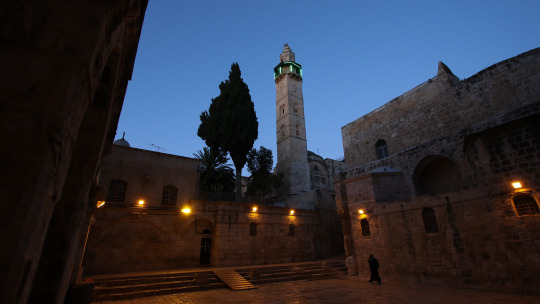
PHOTO 26: It was Saturday; the day of the Jewish Shabbat, a holy day when the highlight of the whole pilgrimage took place: we would have Mass at the Empty Tomb of Christ, in the church of the Holy Sepulchre. Appropriately, we made our way to the church in silence, processing through deserted city, and the church, too, was nearly empty when we arrived. After all, it was shortly after 4 a.m. (!) when we entered the city through Herod’s Gate and walked through the silent Muslim Quarter to the Franciscan monastery.
Moving some 250 people in silence through the uneven streets of an ancient city, before daybreak, is an impressive feat! But this silence and secrecy was entirely fitting. For the Gospels, too, are silent about what happened on the Saturday, the day of the Passover, after Jesus was crucified. St John says the following about the Friday on which Jesus died, the “day of Preparation” but concerning the Sabbath, nothing is reported – it is only alluded to:
“Since it was the day of Preparation, in order to prevent the bodies from remaining on the cross on the sabbath (for that sabbath was a high day), the Jews asked Pilate that their legs might be broken, and that they might be taken away... But one of the soldiers pierced his side with a spear, and at once there came out blood and water... After this Joseph of Arimathe'a, who was a disciple of Jesus, but secretly, for fear of the Jews, asked Pilate that he might take away the body of Jesus, and Pilate gave him leave. So he came and took away his body. Nicodemus also, who had at first come to him by night, came bringing a mixture of myrrh and aloes, about a hundred pounds' weight. They took the body of Jesus, and bound it in linen cloths with the spices, as is the burial custom of the Jews. Now in the place where he was crucified there was a garden, and in the garden a new tomb where no one had ever been laid. So because of the Jewish day of Preparation, as the tomb was close at hand, they laid Jesus there.” (Jn 19:31, 34, 38-42)
From the Franciscan Monastery of the Flagellation, we began our quiet journey on the Via Dolorosa, sleepy but alert, praying the Stations of the Cross as best as we could. Somewhere in the crowd, Jim Caviezel walked with us, as together with him we walked the path of Jesus through the streets of Jerusalem.
At around 5:30 a.m. we prayed the last three stations of the Cross in the courtyard in front of the church of the Holy Sepulchre; in the distance, a cock crowed.
This photo was taken shortly after everyone had entered the church, looking back towards the way we had come; the minaret of the mosque of Omar looms overhead. For many of our group, it was their first time visiting Calvary and the Empty Tomb so I remained outside and I savoured the cool air of the morning; and soaked in the silence of the holy courtyard, traversed only by a cat or a monk; and I observed the colour of the sky change as the light of the new day came. Dawn at the Holy Sepulchre on an Easter Saturday: what a blessed moment!
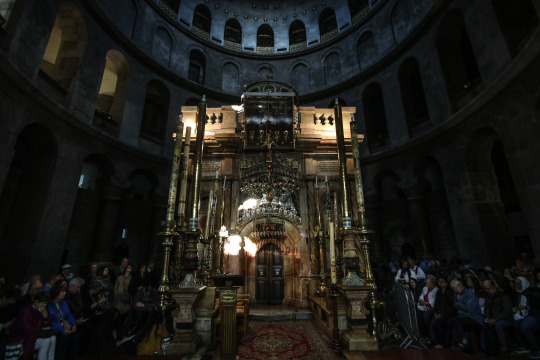
PHOTO 27: We had a good hour and a half before the time allocated to us for Mass: time to explore, time to pray and reflect, time for Confession and spiritual preparation for Holy Mass. Ahead of us, saying Mass inside the Empty Tomb with a small group of pilgrims, was the Bishop of a French diocese, hence the doors are closed. During this time, one of our group took photos of these closed doors and she came and showed me the photos. One of them had the clear figure of a man robed in a white Jewish prayer shawl standing in the doorway, even though none of us had seen the doors even open! Take a look here and see what you think!
"I saw the risen Lord appearing to His Blessed Mother on Mount Calvary. He was transcendently beautiful and glorious, His manner full of earnestness. His garment, which was like a white mantle thrown about His limbs, floated in the breeze behind Him as He walked. It glistened blue and white, like smoke curling in the sunshine.” - Blessed Anne Catherine Emmerich’s vision of the Risen Lord.
The photo above was taken very shortly before we went into the sacristy to prepare for Mass. I had been watching the sunlight of the new day penetrate the darkness of the Holy Sepulchre church. The rays of light enter through the smaller dome of the ‘Catholicon’ (the Greek Orthodox sanctuary in the centre of the building), and then it strikes the little onion dome and cross of the ‘Aedicule’, which is this structure that envelopes and protects the Empty Tomb itself. As the sun ascends in the sky, the rays of light then travel downwards until it reaches the doors of the Aedicule, and penetrate into the Empty Tomb.
An hour after this photo was taken, I was standing inside the Aedicule, concelebrating the Holy Mass with my brother priests, standing around the very spot where the angel of the Resurrection had hailed the holy women that first Easter morning. And then, stooping to go into the Empty Tomb itself, I received the Eucharistic Body and Blood of the Risen Christ that was lying on the Altar, on top of the stone where Jesus had been laid and from which he had risen from the dead, alleluia!
This single moment, this sun-lit morning, all we had experienced so far on the 4th of May 2019, was probably one of the most unforgettable and spiritually intense moments of my whole life.
“Do not be afraid... He is not here; for he has risen, as he said. Come, see the place where he lay. Then go quickly and tell his disciples that he has risen from the dead”. (Mt 28:5-7)
However, in every Mass, we encounter the Risen Lord, and we are then sent forth wherever we may be, as though from this Empty Tomb in Jerusalem, to quickly announce the Good News: Χριστός Ανέστη! Surrexit Dominus vere! Christ is risen, Alleluia, alleluia, alleluia!
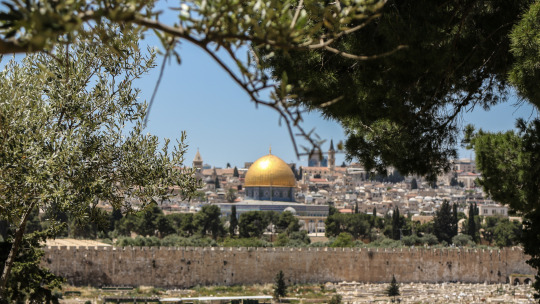
PHOTO 28: The focus of this photo is the olive tree, for we are on the Mount of Olives, looking towards the Holy City with the iconic Dome of the Rock, the Muslim shrine built on the very site where the Temple of Jerusalem once stood until the Romans destroyed it, as Christ prophesied, in 70 AD.
After Mass in the Holy Sepulchre, and after breakfast, we went to the top of the Mount of Olives to take in the view of the city, and then we descended the hill, waving palm branches and singing ‘Hosannas’ as we went; in a few hours we had gone from Easter morning to Palm Sunday! We made our way to the little church of Dominus Flevit where Jesus had beheld the city of Jerusalem, foretold of its destruction, and wept for its people.
Looking towards the city, one takes in its long and complicated and turbulent history; full of human strife and violence as the One the city had once hailed with ‘Hosannas’ was rejected, taken outside, and executed as a criminal. But, as St Paul says: “In him all the fulness of God was pleased to dwell, and through him to reconcile to himself all things, whether on earth or in heaven, making peace by the blood of his cross.” (Col 1:19-20)
In this photo, therefore, I wanted to show the city in its splendour and in its divided history, and also to take in the branches of the trees which the people had cut and waved to hail the coming Messiah. But above all, I wanted to focus on the olive branch, not just because it indicated our location, the Mount of Olives, but because it is a universally recognised emblem of peace.
“For the peace of Jerusalem pray:
"Peace be to your homes!
May peace reign in your walls,
in your palaces, peace!"” – Psalm 122:6-7
Agnus Dei, qui tollis peccata mundi: dona nobis pacem.
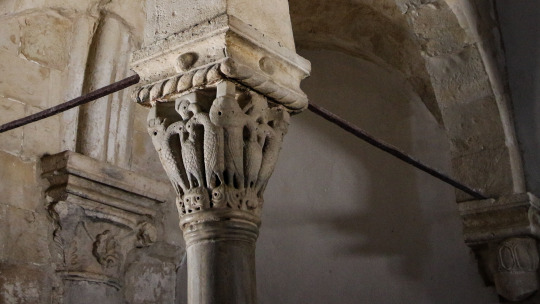
PHOTO 29: Continuing to mark Holy Week in one day, we went to Mount Sion after lunch, to the site of the Upper Room, the cenacle, where Jesus had celebrated the Passover with his disciples, instituting the sacraments of the Holy Eucharist and the Priesthood. In the same room, the Holy Spirit had came upon Our Lady and the disciples at Pentecost so that “out of Sion shall go forth the law, and the word of the LORD from Jerusalem" (Isa 2:3).
So, that Saturday afternoon we stood in a 14th-century structure built on various iterations of a church building that has stood here since the earliest days, although it is now sadly just an archeological space, a museum since beneath it is the tomb of King David, a holy shrine for the Jews and I suppose they did not want a church right above. But in the 5th-century, this holy place was called “Sion, Mother of all the Churches”.
This name is fitting since it is here that the Church was born. As Pope St John Paul II wrote shortly after visiting this place:
The Church, while pointing to Christ in the mystery of his passion, also reveals her own mystery: Ecclesia de Eucharistia. By the gift of the Holy Spirit at Pentecost the Church was born and set out upon the pathways of the world, yet a decisive moment in her taking shape was certainly the institution of the Eucharist in the Upper Room. Her foundation and wellspring is the whole Triduum paschale, but this is as it were gathered up, foreshadowed and “concentrated' for ever in the gift of the Eucharist. – Ecclesia de Eucharistia, 5.
The photo above is focussed on a carved stone capital from c.1335 that is part of the canopy over the platform where, perhaps, the altar would have once stood. This carving is interesting because of its Eucharistic symbolism. Over the past few days we have seen some other early Christian symbols such as the anchor, and the peacock. Here in the cenacle, in the place where Jesus gave us the Eucharist, we have the pelican. To be precise, two pelicans are shown plucking at the breast of the central pelican, and this symbol is known as the ‘Pelican in piety’. It was believed that pelicans would feed their own young with their own flesh and blood, and so this became an image of Christ feeding the Christian people: the Church receives its life from the Eucharist which is the sacrament of Christ’s Body and Blood; Ecclesia de Eucharistia.
So St Thomas Aquinas prayed in his hymn, Adoro Te devote:
Pie Pelicane, Jesu Domine, me immundum munda tuo Sanguine: cujus una stilla salvum facere totum mundum quit ab omni scelere.
Lord Jesus, Good Pelican, wash my filth and cleanse me with Your Blood, one drop of which can free the entire world of all its sins.
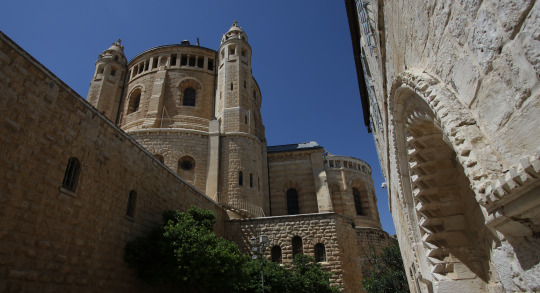
PHOTO 30: Standing at the doorway that leads up to the cenacle, we look back towards the tallest building in the area, built on the summit of Mount Sion. This is the Benedictine Abbey of the Dormition, which commemorates the fact that Our Lady, the “Daughter of Sion” fittingly ended her earthly life somewhere nearby on Mount Sion. Psalm 87, therefore, although it refers to the holy mountain of Sion has also long been regarded as alluding to Our Lady. For the Lord has preferred her to all others and has dwelt within her; like a city whose walls are never breached, so has she remained ever virgin yet is the abode of the great King:
On the holy mountain is his city
cherished by the Lord.
The Lord prefers the gates of Sion
to all Jacob's dwellings.
Of you are told glorious things,
O city of God! – Psalm 87:1-3
Saturdays, of course, are dedicated to Mary, so within the Dormition Abbey, we had gathered to sing glorious things concerning the Mother of God. As we headed back to the Old City of Jerusalem, passing by the Sion Gate, I stopped to marvel at the many beautiful roses that bloomed here. They were another fitting tribute to Our Lady, and a glorious end to our tour on Lady Day in the Holy Land.
Tomorrow: Reliving Easter Sunday at dawn by the Empty Tomb; Bethesda and Mary’s birthplace; Bar Mitzvah celebrations.
8 notes
·
View notes
Text
King Dinis of Portugal: The King who protected the Templars
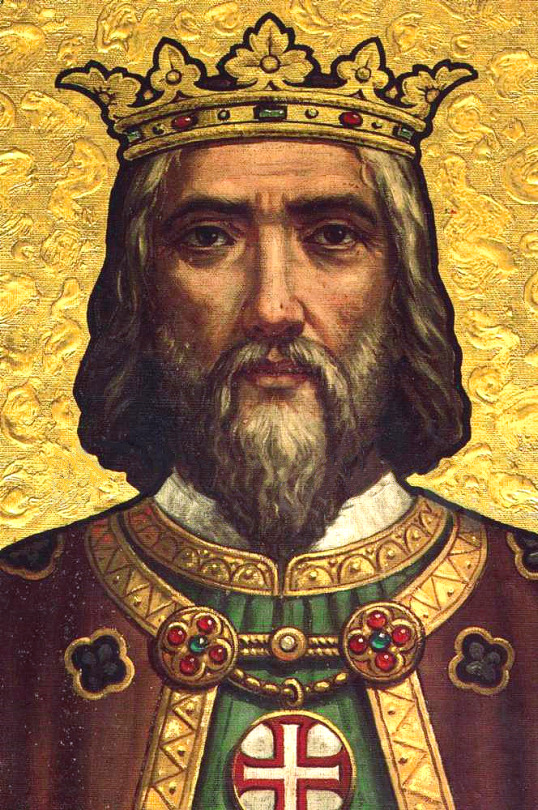
King Dinis was the 6th King of Portugal from 1279 to 1325, catching the horrible year of the “extinction” of the Knights Templar. He was the only King that actually protected the Templars, making Portugal the only country that didn’t arrest, torture and kill the Templars.
Why and How? Let’s go back to the beginning:
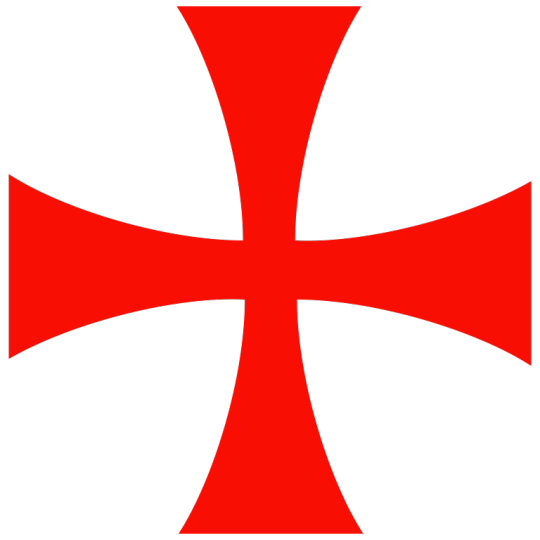
The Military Order of the Temple, founded in France in the Champagne region in the year 1119 in the context of the holding of the Council of Naplus, is one of the best known military orders in medieval Christian Europe created to protect the pilgrimage movements to the Holy Places of the Middle Eastern Christianity under increasing descent from the power of Islamic confession. Military orders were born in the heart of the Middle Ages as a specialized version of the institutionalized Christian monastic experience under the institutional nomenclature called "Orders", whose most famous European Proto-Order and mother of all Western orders was the Order of St. Benedict.
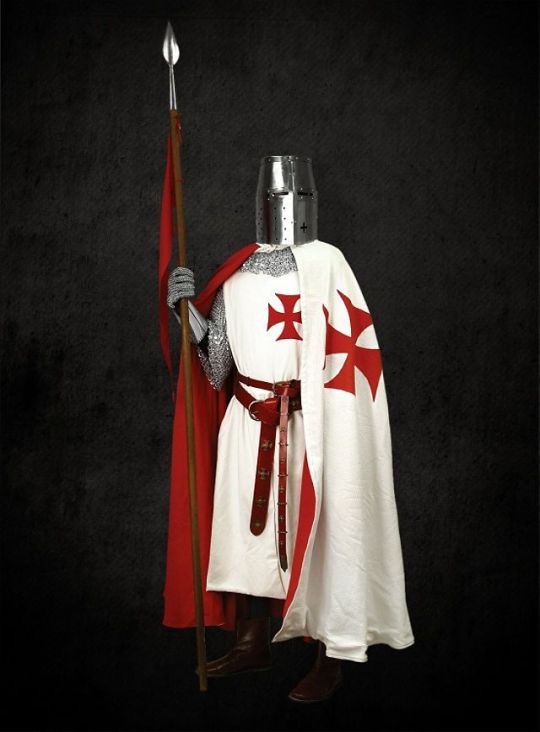
The Templars were first born in the dependence of the Canons of the Holy Sepulcher, rapidly becoming autonomous under the leadership of their first Grand Master, Huges de Payns.
The Templars, Freires of Christ or Freires of Solomon's Temple as they were also designated, associated with their religious consecration by the profession of the evangelical counsels of Poverty, Chastity and Obedience, the commitment to give their lives for the protection of the pilgrims and the defense of Christianity against the threat of Islamic power that afflicted Christians. The Order of the Temple, along with other military orders such as Santiago, Calatrava, Hospital, and Avis, cooperated with the armies of Christian kings and lords in the crusades against the so-called “infidel” in both the Middle East and as in the Iberian Peninsula, seeking to regain the territories of former Christian rule, however conquered by the Muslims.
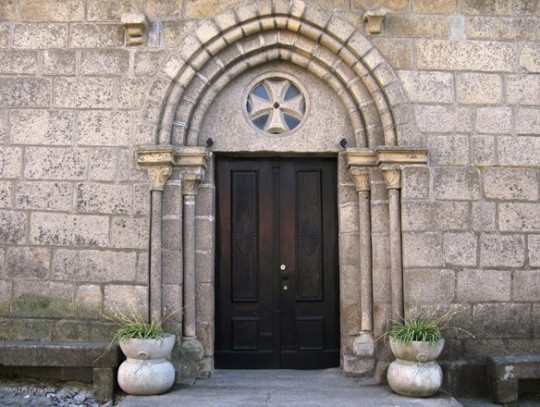
These military orders functioned as a kind of well-trained and highly motivated elite troop whose participation in battle often decided the meaning of victory.
The service rendered by these institutions to Christian monarchs, with particular emphasis on the Order of the Temple, was largely rewarded with the allocation of property, namely land, castles and other perks, which made them powerful and influential. In Portugal, in addition to the fundamental role played by the Order of the Temple, along with its counterparts, in the Christian reconquest and, consequently, in the formation of Portugal, played a relevant role in the settlement and control of the territory conquered to the Moors.
Due to a number of factors that still need full explanation, the Order of the Temple was, after almost two hundred years of existence, subjected to a tragic process that led to its extinction.
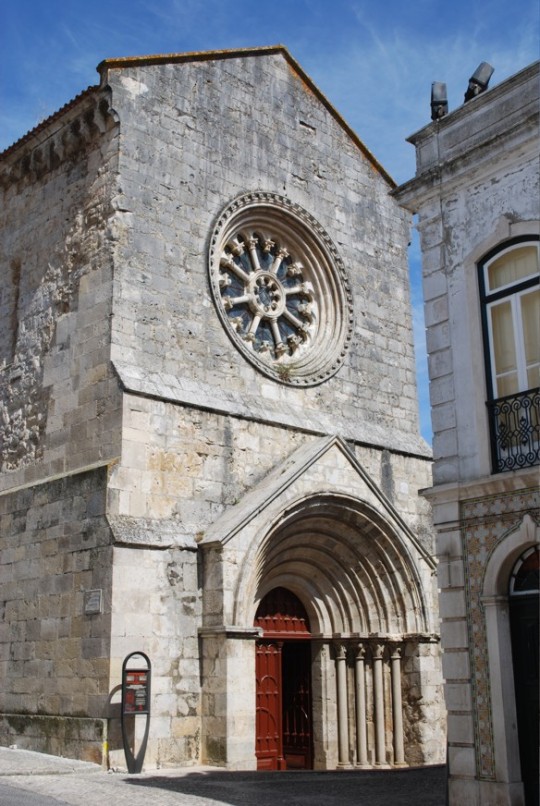
The anti-Templar process was led by the King of France, Philip the Handsome (cousin of the Portuguese King Dinis), who got the collusion of the then Pope, Clement V, to hold the Temple Order guilty of deviations and serious misconduct.
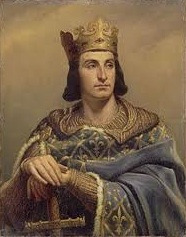
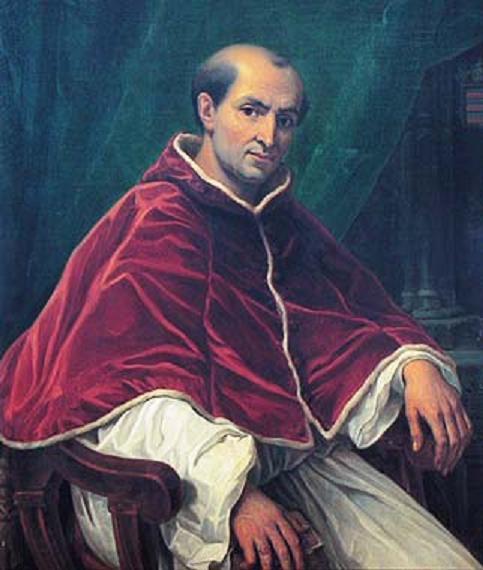
In such a way that the French monarch succeeded, although today we are not sure whether with just evidence, to obtain from the Pope the extinction of this Order and even the condemnation of its most important leaders, culminating in the death of the fire of his last Grand Master, But the process had begun in 1308 with a papal bull sent to the Christian princes to clarify the Templar situation and to declare the need for their extinction, followed by another bull, issued in 1309, to order the arrest of the Templars, and, finally, of the Bull Ad Providum, of March 1312, to decree the annexation of the significant assets of this Order and to transfer them to the Order of the Hospital.
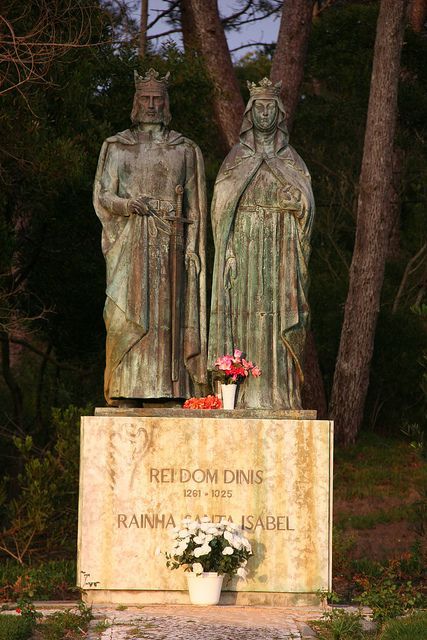
However, King Dinis, who then presided over the Portuguese throne, resisted accepting the papal directive that ordered the extinction of the Order of the Temple, aware of the very important service he had provided and continued to render in the defense and settlement of Portuguese territory.
In 1308 King Dinis received the bull, called Callidi Serpentis Vigil, requesting the arrest of the Portuguese Templars to be handed over the courts. King Dinis protects the Templars and does not arrest them and prepares a plan to protect their assets and a continuity of the Templars in Portugal under a different name.
In 1317, King Dinis proposed the creation of a Lusitanian Monastic Military Order that have its headquarters in Castro Marim, Algarve, with the nominal aim of protecting Portugal from the Muslims. Pope John XXII agrees and in 1319 the Order of the Calvary of Our Lord Jesus Christ is born.

The new order received the assets of the Templars as a result of King Dinis plan.
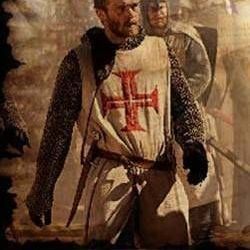
The first master was Gil Martins. Moreover the new order was made up of ancient Templars and thus remained, in general, respectfully treated in Portugal. The last master of the Templars, Vasco Fernandes, finished his days as Commander of the Order of Christ. After 11 years King Dinis plan triumphed. In 1357 they moved to the Templars former headquarters: The Christ Convent in Tomar.


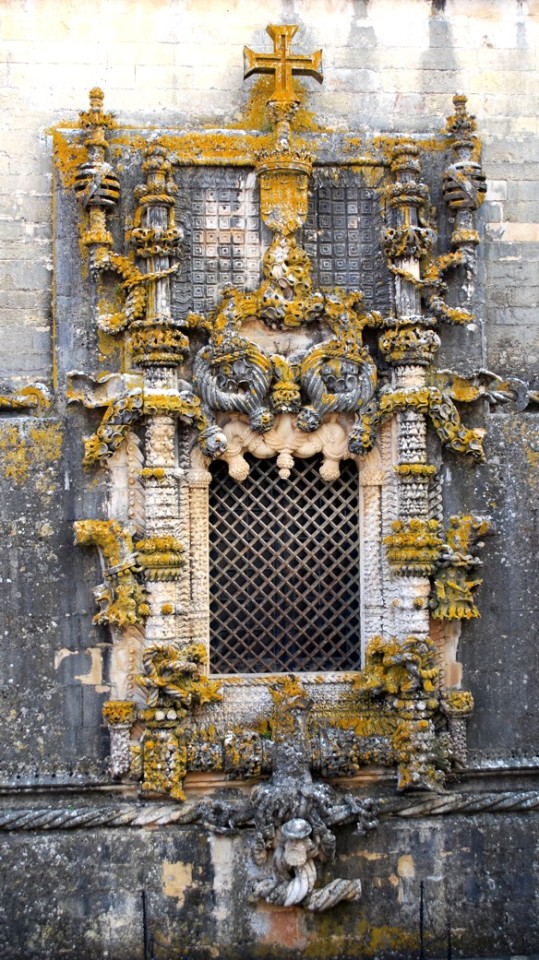
At the time their Master was Nuno Rodrigues that years later had the position to educated João, old Master of Aviz, future King João I of Portugal.
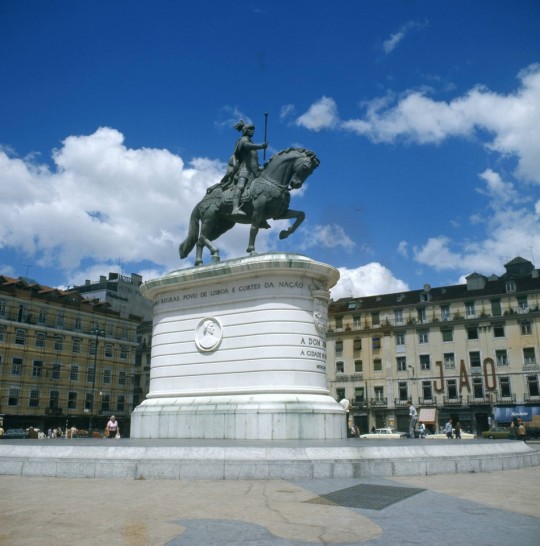
Later, the Order of Christ will lead the promotion of one of the most important and significant companies in the entire history of Portugal: the voyages of discovery. Through the leadership of one of the most famous Grand Masters of the Order of Christ, Infante D. Henrique, (King Dinis great great grandson) Portugal stood in universal history as the first global empire of humanity and the pioneer of the construction of globalization.

In the fifteenth century, the Order of Christ guarded the entire process of discovering new maritime paths and officially unknown territories and peoples, as a consequence of the extra-European expansionist policy promoted by the Avis Dynasty founded by King João I. After the conquest of Ceuta in 1415, the first officially discovered territory in the Atlantic was the Madeira Archipelago in 1419/20, followed by a series of voyages culminating in the navigation of the entire African coast, the passing of the fearsome Cape of Storms, the arrival of to India by sea (1498) and the official discovery of Brazil in 1500.
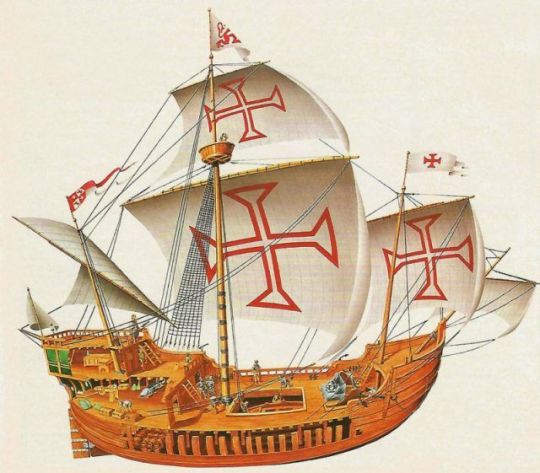
And thanks to an intelligent King, The Knights Templars ruled the world form more than 2 centuries.
13 notes
·
View notes
Text
Pilgrimage to Zion
The prophets speak of the Lord's personal coming to Zion as a distinctive feature of the messianic age. The glory had departed the temple before its destruction, and it never came home. The Spirit went to blow among the exiles of Israel (Ezekiel 8) and continued to blow in the midst of the Jewish people, but the visible revelation and indwelling of Israel's God did not occur. Moreover, the glory had been locked behind a veil for most of Israel's history- to say that God would come to live on Zion was to say more than "the temple shall be renewed." God had lived on Zion only once prior- during the kingdom of David. David brought the ark and placed it on Zion- before the eyes of all Israel. David went and sat directly in God's presence, despite being of Judahite lineage. He was not even a Levite, and even the high priest could only enter the presence once per year, and then standing. The nations participated richly in the life of the Zion tabernacle. The era of Zion was a prophetic sign of things to come, and this is how the prophets speak of it. Isaiah 2 and 24-25 speak of a worldwide pilgrimage to the Zion sanctuary, where they will dwell inside the glory of God, sitting together for a festal meal.
As David had before, the Lord Jesus ascended in triumph to Jerusalem, with shouts and songs of joy surrounding Him. When He entered, He went to the temple "suddenly" as Malachi had foretold. He overturned its tables. But His work did not cease there. Having cleared one table, He set a new table, instituting the Eucharist in the Upper Room. The prophets had spoken of the messianic supper on the holy mountain in God's midst, patterned after the covenantal meal that was had immediately below God's midst in Exodus 24. Jesus says "This is my blood of the new covenant" as Moses had said "this is the blood of the covenant." The room is a sanctuary, a Most Holy Place, as indicated by the consistent title of "Upper" room. It was the top of an architectural mountain, above the ground and in the presence of heaven.
This messianic feast, a celebration of the new exodus, was a paschal meal (including in John's Gospel- see link in first comment and Brant Pitre's superb "Jesus and the Last Supper") in the direct presence of God, the Tribute Offering (an offering made up of Bread and Wine to which Jesus makes reference in calling the Eucharist an "offering of remembrance") of the new covenant. It is the very means by which the prophetic hope of God's ongoing presence with a redeemed and fruitful Israel is fulfilled.
What then, shall we say of the city of Jerusalem that continues to stand today? Does it remain in any sense significant to these promises? We can use Nimrod's kingdom in Genesis 11 as an analogy, for Nimrod is the parody of the reality fulfilled in the real and living King, Jesus. Creation is consistently signified with the number four. The world is God's house- a four cornered, four pillared house. Nimrod built two fourfold kingdoms:
(Genesis 10:10-12) The beginning of his kingdom was Babel, Erech, Accad, and Calneh, in the land of Shinar. From that land he went into Assyria and built Nineveh, Rehoboth-Ir, Calah, and Resen between Nineveh and Calah; that is the great city.
Notice the singularity of "the great city." A kingdom centered on four cities is yet one city. Moreover, note the special significance of the first city as the "chief cornerstone" of the fourfold kingdom. Babylon (Babel=Babylon), the first city in the first fourfold kingdom, names the whole kingdom. We say the same of Jerusalem. The prophets speak of the whole creation becoming Jerusalem. God says:
(Isaiah 65:17-18) "For behold, I create new heavens and a new earth, and the former things shall not be remembered or come into mind. But be glad and rejoice forever in that which I create; for behold, I create Jerusalem to be a joy, and her people to be a gladness.
Notice the parallelism. "I create new heavens..." and "I create Jerusalem..." This is quite natural, as temples are miniaturized heaven-earth complexes and the transformation of the entire city into a temple is a feature of the prophetic hope. Ezekiel 40 introduces the temple vision as a vision of a city on a mountain. The visions of Daniel say likewise. The temple complex includes, in order from the outside-in, iron, bronze, silver, and gold. Daniel 2 reveals a great statue made of these metals as the place in which Israel will dwell until the coming of the kingdom of God, which assimilates the preceding kingdoms. That kingdom is called a "stone cut without hands", echoing Exodus 21 and identifying the stone as an altar which then "became a great mountain and filled the whole earth."
The entirety of creation is filled with that mountain- it all is suffused with the glory of God. So we have these converging images, each of which funnels into the vision of the church as the city of God in Revelation 21. Revelation 21 describes the New Jerusalem:
(Revelation 21:16-17) The city lies foursquare; its length the same as its width. And he measured the city with his rod, 12,000 stadia. Its length and width and height are equal. He also measured its wall, 144 cubits by human measurement, which is also an angel's measurement.
We are plainly dealing with multiples of twelve as an image of the blossoming Israel, the Jewish people linked inseparably from the ingrafted family of all nations. These dimensions, as James Jordan points out, are compatible with either a cube or a pyramid. That we read of the river flowing from the throne down the city tells us that we are dealing with a pyramid. This is a vision of the upbuilt temple in Ezekiel 40-48 and the fully grown mountain of Daniel 2. The garden of John 20 has been cultivated, grown, tended, and glorified into the city of Revelation 21. God asks not only that Adam guard, but also that he cultivate the garden. The injunction to humanity in Genesis 1 is directed outwards. They are to "conquer" the world- not by blood, but by development, shaping, and glorification to the honor of the Creator. That is why the prophets see swords and spears transformed into tools- plows and pruning hooks. Genesis 2 shows us a land of food (Eden) and a land of precious stones and metals (Havilah), and Revelation 21 shows us these two resources integrated into one glorious city.
The trajectory of scripture is from the garden to the city, from a promised land to a "city which was to come." This city is a city without ceasing to be a garden. The whole cosmos becomes "citified" in that its every element is developed through the agency of man, the image of God. That which was lovely becomes all the lovelier, its qualities apprehended and utilized to this ultimate end.
The communication of the divine presence to every corner of the world takes place through the Church, whose being and essence is derived from the celebration of the Holy Eucharist, in which God dwells with man. As the Lord says in John 4, "the time is coming" when "neither on this mountain nor in Jerusalem" will God be liturgically centered, but in every nook and cranny of the cosmos where there are worshipers in Spirit and Truth (i.e. the Spirit and the hypostatic Truth, the Logos). Yet, given the fourfold city-kingdom I described above, we can see the ongoing role of the city Jerusalem in the divine economy. That the incarnate Word worked His redemption passion and resurrection in the city marked that city for all eternity as uniquely consecrated to God.
In the liturgical year, the Sunday after Pascha is consecrated, with all other Sundays, to the celebration of the resurrection. The Paschal Liturgy is the Liturgy par excellence, with every other Sunday liturgy flowing from it and imaging it. Likewise, the Church of the Holy Sepulchre is the temple par excellence. John 20 speaks of the Tomb of Christ in terms taken from the Holy of Holies, two angels sitting on either side of Christ's resting place as the two cherubim on either side of Yahweh's footstool. Paschal Liturgy in the Church of the Holy Sepulchre is the focal point, in space and time, of the liturgical life of the universal Church.
And here we gain new insight into the nature of the prophetic hope. Isaiah begins by speaking of the nations which "flow" to worship in Zion and learn Torah there. This comes from Genesis 2 and 10- the river flowing from God is "divided" into four in the garden just as the nations are "divided" from their original home in Genesis 10-11- the word is only used nine times in the Torah, four of which refer to the rivers and nations. Isaiah ends with a description of a river flowing from the renewed Zion- a river which flows and sanctifies the nations before circling back to Jerusalem where the wealth of nations is given over to God. This image is quickly interpreted for us in Isaiah's description of heralds who "declare my glory to the nations" and carry converted Gentiles back to the city as Tribute. Wealth from the nations to Jerusalem, converts from the nations to Jerusalem.
This is why Paul is utterly committed to the Jerusalem collection. He mentions it in a number of his letters. In Romans, he describes it in language taken directly from Isaiah 65. The Book of Acts gives us several instances of this double movement. Luke's Gospel is a single journey towards Jerusalem, at which Jesus promises that "beginning from Jerusalem", the gospel will be proclaimed to all nations. Acts is not a single journey away from Jerusalem, but a repeated pattern of moving outwards and circling back inwards to that center in Jerusalem.That the narrative ends in Rome with the apostolic condemnation of Israel's unbelief is designed to emphasize the open thread. That gospel is flowing forth to the nations, but it will ultimately circle back into Jerusalem.
Romans 9-11 describes this process: through the remnant of Israel, the gospel flows to the nations. When the nations are leavened and the "fullness" of all nations comes in, the process leads to the "fullness" of the Jewish people coming in as well. When Paul says "all Israel shall be saved", he describes the entire, completed Abrahamic family upon the success of the Great Commission. It is a family of all nations, bearing the name "Israel" because of its unbreakable bond with the genealogy of Jacob continuing to exist in the Jewish people- just as we are marked "Christian" with the Name of Christ without draining that Name of its unique bond with the hypostasis of Jesus Christ.
Zechariah describes the process using all of these images. Four chariots go forth from Zion to conquer Babylon (in the "north country" where the Spirit rests sabbatically in Zechariah 6 following Joshua's post-conquest rest). These chariots are the four rivers flowing from the holy mountain as in Genesis 2. Compare the ten water-pillars of holy water constructed in the path from the Temple in 1 Kings 7. They have great, symbolic wheels on the bottom, despite being fixed in place. And the Holy of Holies itself is a chariot, as described in Ezekiel 8. Zechariah 6 tells us that the chariots ride between two bronze mountains on either side, a reference to the two pillars Jachin and Boaz at the door of the Temple and from which the path bordered by the chariots of water ran. Zechariah 14 speaks of this double motion again. A great battle, a river of life flowing from a renewed Zion, and a pilgrimage of all nations- sprinkled clean (thus "no rain" on those who refuse to obey) by the holy water of that river- to Jerusalem.
When all of this is considered, when we consider the liturgical nature of the messianic conquest, the double movement, the reality that all liturgy in all place is an expression of that glorious Divine Liturgy in the Sepulchre of the Lord Jesus, consider the intense concreteness of that global pilgrimage which does, in fact, happen on every Pascha. Gentiles from all over the world physically move themselves to the city of Jerusalem to honor the Messiah of Israel, the God of Israel, and the Scriptures of Israel. There is thus no tension between the symbolic and the concrete prophetic fulfillments- nor are they two true but separate interpretations. Each depends on the other. The creation is glorified into the Jerusalem of God in its entirety, but its glorification contains within it the ongoing existence of the city of Jerusalem and the regular pilgrimage from the nations that occurs annually.
4 notes
·
View notes
Text
Litany of Saint Louis of France
Lord, have mercy on us. Christ, have mercy on us.
Lord, have mercy on us. Christ, hear us. Christ, graciously hear us.
God, the Father of heaven, have mercy on us.
God the Son, Redeemer of the world,
God the Holy Ghost,
Holy Trinity, one God, have mercy on us.
Holy Mary, pray for us.
Holy Mother of God,
Holy Virgin of virgins,
Saint Louis of France,
Saint Louis, scion of devout parents,
Saint Louis, constant protector of the children of God,
Saint Louis, steadfast teacher of piety,
Saint Louis, true model of Christian virtue,
Saint Louis, faithful confessor of the living Christ,
Saint Louis, kingly bearer of humiliations,
Saint Louis, staunch defender of the glorified Christ,
Saint Louis, true martyr of the flesh by mortification,
Saint Louis, detester of worldly pride and honor,
Saint Louis, saviour of souls,
Saint Louis, ardent lover of God,
Saint Louis, kind friend of enemies,
Saint Louis, rapt in prayer to God,
Saint Louis, hope of sinners,
Saint Louis, giver of gifts,
Saint Louis, founder of charitable institutions for the afflicted,
Saint Louis, generous giver of alms,
Saint Louis, lavish dispenser of riches,
Saint Louis, guard of the holy places of pilgrimage,
Saint Louis, detester of immoderate people,
Saint Louis, protector of widows and orphans,
Saint Louis, defender of the sepulchre of Our Lord Jesus Christ,
Saint Louis, victor over the Saracens,
Saint Louis, protector of those in pagan slavery,
Saint Louis, converter of unbelievers to the Christian faith,
Saint Louis, visitor of hospitals and dispenser of favors to the infirm,
Saint Louis, healer of the sick,
Saint Louis, intercessor and patron of the French King,
Saint Louis, from whom those who flee to thee obtain the infallible help of God,
Saint Louis, at whose request divers diseases are miraculously cured, pray for us.
Lamb of God, who takest away the sins of the world, spare us, O Lord.
Lamb of God, who takest away the sins of the world, graciously hear us, O Lord.
Lamb of God, who takest away the sins of the world, have mercy on us.
Christ hear us. Christ, graciously hear us.
Lord have mercy on us. Christ have mercy on us.
Lord have mercy on us.
Our Father ... (in silence).
Hail Mary ... (in silence).
V. Pray for us, Saint Louis:
R. That we may be made worthy of the promises of Christ.
Let us pray.
O Lord, King of kings, Jesus Christ, Who didst love Saint Louis and didst lead him into the heavenly Kingdom: grant that by his intercession and good works, we may participate in his glory for all eternity. Who livest and reignest world without end. Amen.
6 notes
·
View notes
Text
QUOTATIONS - CATHERINE FOX’S ’ACTS AND OMISSIONS’ (FIRST PUBLISHED 1914)
First sentence:
‘When the Linden burst its banks, the ancient city of Lindchester is safe.’ (Fox, 2014, p.3).
On LGBTQ:
‘ “He is so far back in the closet he’s in Narnia!” ‘ (Fox, 2014, p.5).
‘ “I remember the days when marriage was a heterosexual construct that shouldn’t be imposed on gay men, not a human right.” ‘ (Fox, 2014, p.36).
‘ “Yes, I’ve decided to become a lesbian ... It’s a lifestyle choice. Golly, I hope I don’t tear apart the fabric of society and undermine the institution of marriage.” ‘ (Fox, 2014, p.87).
On the church year:
‘Ephiphany: time for the wise to come seeking. If you are a stickler, only now will the magi make their way into your crib scene (which may remain on display until Candlemass). But it’s the twelfth day of Christmas, so take down your decorations, please.’ (Fox, 2014, p.12).
‘Candlemass approaches: the Presentaion of Christ in the Temple. Here we turn our backs on Christmas and set our faces towards Jersualem. On Sunday the crib figures must go back into bubble-wrapped hibernation till December.’ (Fox, 2014, p.5).
‘So Lent begins. No flowers or alleluias till Easter.’ (Fox, 2014, p44).
‘This week marks the midpoint of Lent. The Sunday coming is variously called Laetare Sunday, Refreshment Sunday or Rose Sunday. If you are spiky high, you may wear pink vestments to celebrte the Mass. For the more ordinary Anglican, this is the moment when Lenten discipline is relaxed somewhat. A glass of wine with lunch, perhaps. But for the general population next Sunday is simply Mothers’ Day. Or Mother’s Day? Oh dear. Where should that apostrophe go? Purists brush this dilemma testily aside because it’s ‘Mothering Sunday”. They would no more say Mother’s Day than they would split an infinitive or drop litter.’ (Fox, 2014, p.57).
‘Happy Holy Week ... ‘ (Fox, 2014, p.75).
‘ ... Maundy Thursday ...
Foot-washing! Seriously?’ (Fox, 2014, p.77).
‘Easter week drags by, a bit cold, a bit flat. Next Sunday will be Low Sunday; not the best moment for a first visit to your local church, should you be contemplating such a thing. The vicar will probably be away, and a retired priest will trundle out of hibernation.’ (Fox, 2014, p.86).
‘The season of Easter nurdles gently along. This Sunday will be the Fifth Sunday of Easter (that’s the Fourth Sunday After Easter in old money).’ (Fox, 2014, p.101-2).
‘Here on Planet Church we mark a festival that slips past unremarked elsewhere: Ascension Day, when we celebrte our Lord’s return to haven after forty days of resurrection appearances.’ (Fox, 2014, p.114).
‘It’s Pentecost this coming Sunday (the festival formerly known as Whit Sunday). Another knees-up on Planet Church that passes the secular world by.’ (Fox, 2014, p.120).
‘Trinity Sunday. Another arcane jolly on Planet Church.’ (Fox, 2014, p.128).
‘We are now in Ordinary Time. Or what passes for ordinary on Planet Anglicanism.’ (Fox, 2014, p.141).
‘This Sunday is Christ the King ... In old money this is Stir Up Sunday, the Sunday next before Advent, named after the Prayer Book collect, “Stir up, we beseech thee, O Lord, the wills of my faithful people; that they, plenteously bringing forth the fruit of good works, may of thee be plenteously rewarded; through Jesus Christ our Lord. Amen.” It is. of course, the day on which good Anglicans traditionally order their luxury Christmas puddings from Fortnum and Mason.’ (Fox, 2014, p.273).
On the authorial voice:
‘It is not the business of this novel to intrude into clerical bedrooms and delineate marital relations ... ‘ (Fox, 2014, p.31).
‘I would love to tell you more, but I’m not supposed to know about this ...
I should not have told you any of that.’ (Fox, 2014, pp.46-7).
‘I hope you will permit me to hint that I am the writer, and I can do whatever I bloody like.’ (Fox, 2014, p.90).
On life:
‘Life is not a vicarage tea party. It’s a pilgrimage up a steep and rugged pathway.’ (Fox, 2014, p.39).
On Allegri’s ‘Miserere”:
‘Allegri’s “Miserere”! Music so beautiful that once upon a time the pope kept it to himself, fencing its secret about with threats of excommunication. For over a century it was performed only in the Sistine Chapel, on the Wednesday and Friday of Holy Wek. Then one year the fourteen-year-old Mozart heard it, wrote it down from memory and debased its spiritual currency forever.’ (Fox, 2014, p.43).
REFERENCE
Fox, C. (2014) ‘Acts and omissions’. London: Marylebone House.
0 notes
Text
Gradelynovel - Chapter 565 - King Alexander's Requests nimble enter recommendation-p2
Amazingfiction The Cursed Prince - Chapter 565 - King Alexander's Requests dry pine recommend-p2
Novel-The Cursed Prince-The Cursed Prince
Chapter 565 - King Alexander's Requests tenuous apparatus
The Cursed Prince
Because they were the two males and recognized what it was prefer to adore a lady, he thinking California king Alexander would realize why he designed a real decision.
His phrases had been blunt and then laced with small accusation. Maxim needed to area Queen Alexander to accept his proposition simply by making him sense guilty of his wife's steps.
Ruler Alexander was currently wounded and didn't determine if he could reside for years. Would you proper care and safeguard Elise just after he was gone?
At some point, his time will come and he would depart this earth permanently. Well before he passed away, he would wish to see Elise identified her delight and still have another person to look after her and shield her.
Sooner or later, his time would come and that he would make this earth for a long time. Prior to he died, he would like to see Elise found her delight and get somebody to look after her and protect her.
"You will be prohibited to have any mistresses."
Just after staying muted for a long period, Master Alexander spoke.
"You will have a way with terms," Ruler Alexander commented. "You almost certain me."
Novel
Does his mom keep in touch with the Leoraleis and let them know almost everything? Then, perhaps California king Alexander would not like what Maxim have.
Novel
PPS: I also observed a youtube video that tells me of Mars and Snow, his horse. The resemblance is uncanny.. hahahah. Sorry, I cannot upload video lessons right here, I'll just submit the screenshots.. It is possible to pay a visit to my Instagram consideration to see it @missrealitybites.
Maxim stared back for the queen. His gaze was filled up with willpower.
Maxim furrowed his brows within the final obtain.
I don't know why, but writing this chapter was so tricky. I had maybe 5 many hours in order to publish this component. I will create even more for nowadays and then we can read how Emmelyn could see Harlow out of the magical golf ball.
The Cursed Prince
I don't know why, but writing this chapter was so difficult. I required perhaps 5 a long time merely to publish this piece. I am going to create much more for right now therefore we can read how Emmelyn could see Harlow out of the miraculous soccer ball.
Maxim stared back in the ruler. His gaze was filled up with resolve.
Did his mum keep in touch with the Leoraleis and inform them almost everything? In that case, might be Queen Alexander would nothing like what Maxim does.
will power meaning
"On account of your wife sought me to wed Elise so badly she got wrecked someone else's lifestyle to ensure it happen," Maxim responded genuinely. He, as well, spoke inside of a make any difference-of-factly sculpt. "The least you can do is permit me to stop this madness by marrying your little princess. Emmelyn has struggled plenty of."
The Cursed Prince
The elderly emperor nodded. "I have."
King Alexander cherished his little girl far too much to let her proceed through this type of daily life.
Immediately after Emmelyn and Myrcella left, there was silence on the dining area. Queen Alexander searched deep in believed. He still couldn't are convinced what his delayed spouse do well before she died. It was actually horrific and harsh.
King Alexander cherished his daughter too much to allow her move through this sort of existence.
The Cursed Prince
"My new mother preserved informing me how the Leoraleis will be the kindest persons she had ever met," Maxim persisted his words. "Frankly, it's so desperately to believe that now. Even so, I am just pleased to trust my mother's verdict and think that you may carry out the appropriate matter."
Aunt Jane's Nieces at Work
His silly child enjoyed this person before him now who just openly and boldly admitted he was deeply in love with another girl. If Elise read what Maxim just stated, she must be heartbroken.
.
Ruler Alexander was currently harmed and didn't determine he could are living for some time. Who will treatment and defend Elise following he vanished?
As he read the storyplot from his mom earlier these days, he could only retain silent. That was an issue that his better half normally wouldn't do since Catalina was a really sugary person. But maybe becoming a mommy evolved her? He didn't know.
"You might be prohibited to consider any mistresses."
He thinking it would be disrespectful to rest to California king Alexander because it means he thinking the older queen was foolish.
His thoughts ended up blunt and today laced with moderate accusation. Maxim needed to area Ruler Alexander to just accept his offer through making him sense liable for his wife's steps.
"Then, you must know I only want to see Emmelyn delighted," Maxim added. "I am just a selfish person, but after I became aquainted with her, I not worry about the thing i want - only what she wants. Her discomfort turns into my discomfort, and her pleasure will become my happiness. So... because her largest worry is definitely the curse, I wish to ease her fret so she could are living peacefully."
"Your Majesty," Maxim wanted to bust the ice cubes and convey what he acquired under consideration. "I have got thought about this plus i would like to question your authorization to get married to Elise."
Having said that, if Elise hitched this male, wouldn't she go through as well? Unless of course Maxim grew feelings for Elise, then it could be a one-sided romance and a loveless marital life.
Immediately after staying calm for a long period, Master Alexander spoke.
Ultimately...
"Then, you have to know I only desire to see Emmelyn happy," Maxim added in. "I am a selfish guy, but right after I attained her, I not any longer worry about the things i want - only what she wants. Her ache ends up being my pain, and her contentment turns into my joy and happiness. So... considering the fact that her biggest fret may be the curse, I want to minimize her get worried so she could stay peacefully."
***************
0 notes
Photo
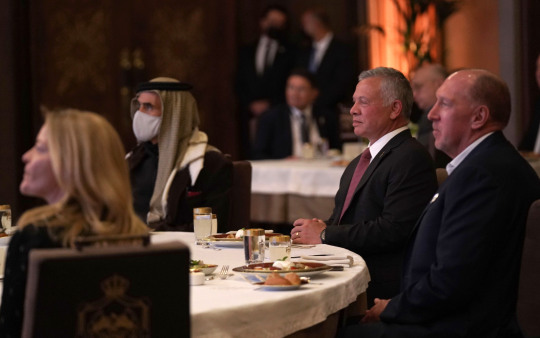
8 November 2021: King Abdullah II attended a ceremony to launch the international advisory board to develop the area surrounding the Baptism Site of Jesus Christ.
The board, formed last year, will provide a strategic vision to develop the site as a Christian pilgrimage station by enhancing infrastructure to accommodate additional pilgrims and other visitors from around the world, and establishing a pilgrims’ village with hotels, hospitality and a spiritual ceremonies area, in addition to developing agricultural parks and gardens in the areas surrounding the Baptism Site.
The board will oversee the development of these areas, while ensuring the protection of the Baptism Site as a UNESCO World Heritage Site. (Source: Petra)
The advisory board groups experts from around the world in development, tourism, cultural heritage, and hospitality, among other key fields.
The Baptism Site of Jesus Christ in Jordan, also known as Bethany Beyond the Jordan, is one of the most sacred places on earth for all Christians.
Prince Ghazi bin Muhammad—His Majesty’s chief adviser for religious and cultural affairs and personal envoy and chairman of the Board of Trustees of the Baptism Site Commission—a number of senior officials and diplomats, and members of the board of the non-profit institution to develop the land adjacent to the Baptism Site attended the launch.
0 notes
Photo

18th April >> Mass Readings (USA)
Maundy Thursday - Chrism Mass
and
Evening Mass of the Lord's Supper.
Maundy Thursday - Chrism Mass
(Liturgical Colour: White)
First Reading
Isaiah 61:1–3a, 6a, 8b–9
The Lord has anointed me and sent me to bring glad tidings to the lowly, and to give them oil of gladness.
The spirit of the Lord God is upon me,
because the Lord has anointed me;
he has sent me to bring glad tidings to the lowly,
to heal the brokenhearted,
to proclaim liberty to the captives
and release to the prisoners,
to announce a year of favor from the Lord
and a day of vindication by our God,
to comfort all who mourn;
to place on those who mourn in Zion
a diadem instead of ashes,
to give them oil of gladness in place of mourning,
a glorious mantle instead of a listless spirit.
You yourselves shall be named priests of the Lord,
ministers of our God you shall be called.
I will give them their recompense faithfully,
a lasting covenant I will make with them.
Their descendants shall be renowned among the nations,
and their offspring among the peoples;
all who see them shall acknowledge them
as a race the Lord has blessed.
The Word of the Lord
R/ Thanks be to God.
Responsorial Psalm
Psalm 89:21–22, 25 and 27
R/ For ever I will sing the goodness of the Lord.
“I have found David, my servant;
with my holy oil I have anointed him.
That my hand may always be with him;
and that my arm may make him strong.”
R/ For ever I will sing the goodness of the Lord.
“My faithfulness and my mercy shall be with him;
and through my name shall his horn be exalted.
He shall say of me, ‘You are my father,
my God, the Rock, my savior!’”
R/ For ever I will sing the goodness of the Lord.
Second Reading
Revelation 1:5–8
Christ has made us into a Kingdom, priests for his God and Father.
[Grace to you and peace] from Jesus Christ, who is the faithful witness, the firstborn of the dead and ruler of the kings of the earth. To him who loves us and has freed us from our sins by his Blood, who has made us into a Kingdom, priests for his God and Father, to him be glory and power forever and ever. Amen.
Behold, he is coming amid the clouds,
and every eye will see him,
even those who pierced him.
All the peoples of the earth will lament him.
Yes. Amen.
“I am the Alpha and the Omega,” says the Lord God, “the one who is and who was and who is to come, the Almighty.”
The Word of the Lord
R/ Thanks be to God.
Gospel Acclamation
Isaiah 61:1 (cited in Luke 4:18)
The Spirit of the Lord is upon me;
for he has sent me to bring glad tidings to the poor.
Gospel
Luke 4:16–21
The Spirit of the Lord is upon me, because of which he has anointed me.
Jesus came to Nazareth, where he had grown up, and went according to his custom into the synagogue on the sabbath day. He stood up to read and was handed a scroll of the prophet Isaiah. He unrolled the scroll and found the passage where it was written: The Spirit of the Lord is upon me, because he has anointed me to bring glad tidings to the poor. He has sent me to proclaim liberty to captives and recovery of sight to the blind, to let the oppressed go free, and to proclaim a year acceptable to the Lord. Rolling up the scroll, he handed it back to the attendant and sat down, and the eyes of all in the synagogue looked intently at him. He said to them, “Today this Scripture passage is fulfilled in your hearing.”
The Gospel of the Lord
R/ Praise to you Lord Jesus Christ.
———————
Maundy Thursday - Evening Mass of the Lord's Supper
(Liturgical Colour: White)
First Reading
Exodus 12:1–8, 11–14
The law regarding the Passover meal.
The Lord said to Moses and Aaron in the land of Egypt, “This month shall stand at the head of your calendar; you shall reckon it the first month of the year. Tell the whole community of Israel: On the tenth of this month every one of your families must procure for itself a lamb, one apiece for each household. If a family is too small for a whole lamb, it shall join the nearest household in procuring one and shall share in the lamb in proportion to the number of persons who partake of it. The lamb must be a year-old male and without blemish. You may take it from either the sheep or the goats. You shall keep it until the fourteenth day of this month, and then, with the whole assembly of Israel present, it shall be slaughtered during the evening twilight. They shall take some of its blood and apply it to the two doorposts and the lintel of every house in which they partake of the lamb. That same night they shall eat its roasted flesh with unleavened bread and bitter herbs.
“This is how you are to eat it: with your loins girt, sandals on your feet and your staff in hand, you shall eat like those who are in flight. It is the Passover of the Lord. For on this same night I will go through Egypt, striking down every firstborn of the land, both man and beast, and executing judgment on all the gods of Egypt—I, the Lord! But the blood will mark the houses where you are. Seeing the blood, I will pass over you; thus, when I strike the land of Egypt, no destructive blow will come upon you.
“This day shall be a memorial feast for you, which all your generations shall celebrate with pilgrimage to the Lord, as a perpetual institution.”
The Word of the Lord
R/ Thanks be to God.
Responsorial Psalm
Psalm 116:12–13, 15–16bc, 17–18
R/ Our blessing-cup is a communion with the Blood of Christ.
How shall I make a return to the Lord
for all the good he has done for me?
The cup of salvation I will take up,
and I will call upon the name of the Lord.
R/ Our blessing-cup is a communion with the Blood of Christ.
Precious in the eyes of the Lord
is the death of his faithful ones.
I am your servant, the son of your handmaid;
you have loosed my bonds.
R/ Our blessing-cup is a communion with the Blood of Christ.
To you will I offer sacrifice of thanksgiving,
and I will call upon the name of the Lord.
My vows to the Lord I will pay
in the presence of all his people.
R/ Our blessing-cup is a communion with the Blood of Christ.
Second Reading
1 Corinthians 11:23–26
For as often as you eat this bread and drink the cup, you proclaim the death of the Lord.
Brothers and sisters: I received from the Lord what I also handed on to you, that the Lord Jesus, on the night he was handed over, took bread, and, after he had given thanks, broke it and said, “This is my body that is for you. Do this in remembrance of me.” In the same way also the cup, after supper, saying, “This cup is the new covenant in my blood. Do this, as often as you drink it, in remembrance of me.” For as often as you eat this bread and drink the cup, you proclaim the death of the Lord until he comes.
The Word of the Lord
R/ Thanks be to God.
Gospel Acclamation
John 13:34
I give you a new commandment:
love one another as I have loved you.
Gospel
John 13:1–15
Jesus loved them to the end.
Before the feast of Passover, Jesus knew that his hour had come to pass from this world to the Father. He loved his own in the world and he loved them to the end. The devil had already induced Judas, son of Simon the Iscariot, to hand him over. So, during supper, fully aware that the Father had put everything into his power and that he had come from God and was returning to God, he rose from supper and took off his outer garments. He took a towel and tied it around his waist. Then he poured water into a basin and began to wash the disciples’ feet and dry them with the towel around his waist. He came to Simon Peter, who said to him, “Master, are you going to wash my feet?” Jesus answered and said to him, “What I am doing, you do not understand now, but you will understand later.” Peter said to him, “You will never wash my feet.” Jesus answered him, “Unless I wash you, you will have no inheritance with me.” Simon Peter said to him, “Master, then not only my feet, but my hands and head as well.” Jesus said to him, “Whoever has bathed has no need except to have his feet washed, for he is clean all over; so you are clean, but not all.” For he knew who would betray him; for this reason, he said, “Not all of you are clean.”
So when he had washed their feet and put his garments back on and reclined at table again, he said to them, “Do you realize what I have done for you? You call me ‘teacher’ and ‘master,’ and rightly so, for indeed I am. If I, therefore, the master and teacher, have washed your feet, you ought to wash one another’s feet. I have given you a model to follow, so that as I have done for you, you should also do.”
The Gospel of the Lord
R/ Praise to you Lord Jesus Christ.
4 notes
·
View notes